This series of articles divides birds into six categories based on ecosystems: migratory birds, wading birds, climbing birds, raptors, land birds, and songbirds. This article introduces songbirds belonging to the six categories, a total of 22813 Words, 325 species of birds, a total of 298 high-definition pictures. It takes about 180 minutes to read the full text. It is recommended to collect and use it.
Because it is only used for learning, appreciation, and comparison after photographing birds, and does not have professional knowledge, it is difficult to strictly distinguish according to class, family, and genus like classics such as "Bird Manual". It's all based on whim, and I record whatever comes to mind. Errors and omissions are inevitable, so please forgive me.
Songbirds - the most common species, generally refers to all birds of the order Passerine, with a well-developed syrinx structure and very large individual differences. Songbirds are the most evolved group of birds. It is widely distributed and can adapt to a variety of ecological environments. Therefore, the external morphology changes complexly and the differences between them are very obvious. Most are small birds; their beaks are small and strong; their legs are short and strong.
Including: finches, crows, thrushes, flycatchers, swallows, bulbs, hawks, buntings, starlings, shrike, drongos, thrushes, orioles, wagtails, wrens, larks, thrushes, mountain peppers, tits, white-eyes, pacifics , plum-flowered finch, etc.
Common songbirds and difficult words:
Myna [liáo gē] Blackbird [wū dōng] Paradise Flycatcher [wēng] Qiang Ji [qiāng jīng] Starling [liáng niǎo] Magpie Robin [quèqú] White-headed Bulbul [bēi] Gray Wagtail [jí líng] Lee's Pipit [ liù] Wren [jiāo liáo] Gray Yanbi [jú] Black-headed Oriole [shī] Indigo-chin [diàn kē] Crested Bunting [wú] Bird [bī] Oriole [cāng gēng] is also the black-naped oriole.
There are so many songbirds, let’s watch something else first and relax!
Bulbuls, robins, thrushes, flycatchers, pipits... it's coming, it's coming, they are flying together. Oh my god, my head hurts, I don’t recognize anyone. (Beiqu Wudong Jade, Weng Shiju six coins --- Ha, great talent)
Bulbul [bēi]—a small to medium-sized bird with a large change in beak shape and often with beaks and whiskers.
Yu [qú] - small body, long tail, short and pointed bill, beautiful feathers.
Bunting [wú] - looks like a sparrow, its biggest feature is that its beak is conical and pointed, and there is a gap between the upper and lower beaks when the beak is closed.
Thrush [dōng] - has a slender mouth and flat sides, long and flat wings, good at walking, and a pleasant cry.
Sandpiper [yù]——Dark body color, slender mouth, long legs, and no webbing between toes. They often eat small fish, shellfish, insects and migratory birds near shallow water.
Flycatcher [wēng] - small body, slightly flat mouth, many bristles at the base, and short legs. It is a beneficial bird to hunt flying insects.
蓓[shī] - Small in size, with a long and pointed beak, short feet and hard claws, it is the only bird that can climb trees with its head down and its tail up.
鵵[jú] - In Chinese, this word means shrike, but in the family genus it is a bird of the order Passeriformes.
Pipit [liù] - has a small body, a slender mouth and a long tail. It walks and runs quickly on the ground (never jumping) and forages for insects.
鶖[bī]——is a rare character, which is actually the simplification of bird-䳭[jī].
Sparrows: There are 27 species of sparrows in the world, but they are not "thriving" in China. There are only 5 species, namely tree sparrows, house sparrows, black-capped sparrows, black-breasted sparrows, and mountain sparrows. China only has these 5 species. Plant sparrows.
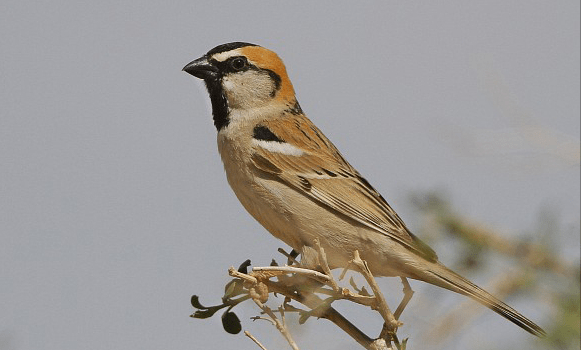
black-capped sparrow
The male black-capped sparrow has a black center on its head, and the upper body of the female bird is light sandy gray-brown. There are slightly dark vertical stripes on the top of the head, nape of neck and upper back, and the eyebrow stripes are ocher and reddish brown.
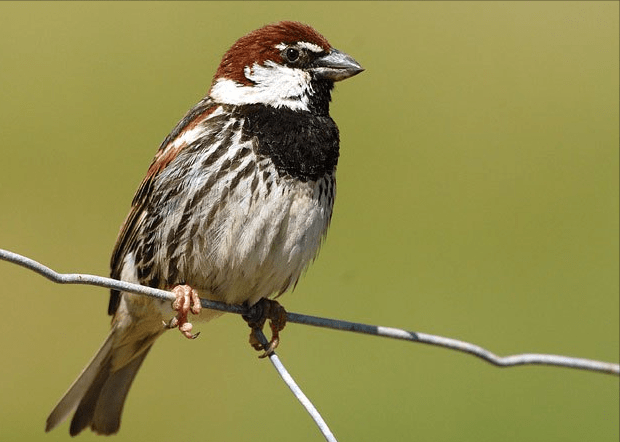
Black-breasted Sparrow
The male Black-breasted Sparrow has maroon forehead, top of head and back neck, black eyes and around the eyes, white cheeks, ear coverts and sides of neck, black chin, middle part of throat, front neck and entire chest.

house sparrow

mountain sparrow
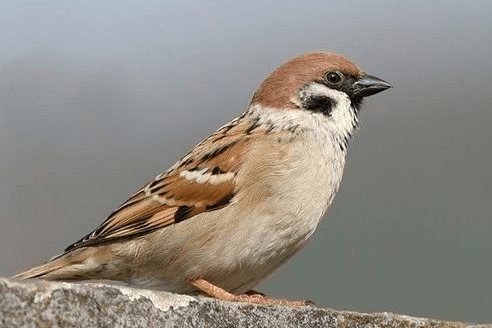
tree sparrow
Chaffinch: There are 3 species, and there are 2 species in China, namely the chaffinch seen across the country and the rare chaffinch
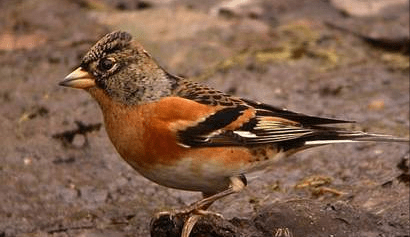
Chaffinch
The beak of the chaffinch is thick and pointed, cone-shaped. The male bird is black from head to back, with yellowish-brown feathers on its back. The waist is white, the chin, throat and chest are orange-yellow, the belly to the lower tail coverts are white, and the two flanks are light brown with black spots. The wings and tail are black with white spots on the wings. The female and male birds are roughly similar, but lighter in color.
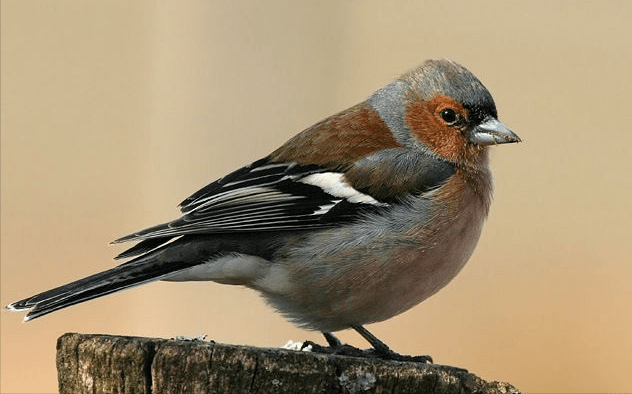
Chaffinch
Chaffinches have striking white shoulder patches and wing spots. The male bird has a light blue head, an ocher-brown back, a light green waist, and pink to ocher cheeks and breasts; the female is green-brown. During the breeding season, the male bird's crown and nape are gray, its upper back is maroon, and its face and chest are pink. The female and young birds are dark and gray in color. The difference from the chaffinch is that the waist is greener and the shoulder stripes are whiter.
The old saying goes: "The sparrow knows the ambition of the swan" comes from "Historical Records: Chen She Family", which means how can the sparrow know the lofty ambitions of the swan, and it is a metaphor that how ordinary people can know the aspirations of heroes. In fact, the swan is strictly speaking a human being Imaginary birds. Hong refers to the wild goose, and swan refers to the swan. Together, the swan and the swan are actually the white phoenix in myths and legends.
Canaries: There are 5 species, and there is only 1 species of golden canary in China, which is found throughout Xinjiang.
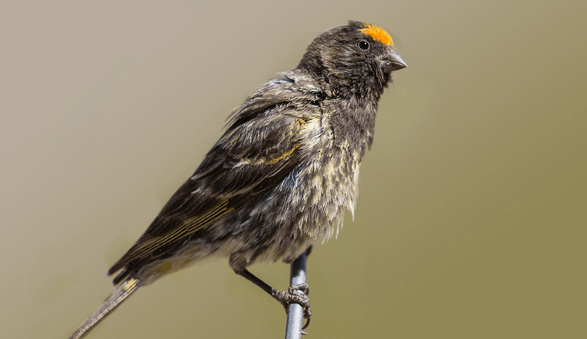
amount canary
The golden canary is a small, mottled brown bird. The head is almost black, and there are bright red spots from the forehead to the crown. Males and females are of the same color, and their body feathers are more beautiful during the breeding season. The young bird is like an adult bird but has a lighter head color, dark brown forehead and cheeks, and dark vertical stripes on the crown and nape. Forked tail, short and conical mouth.
Speaking of this, many people are going to argue. There are still many canaries, such as big golden canaries, golden green canaries (yellow-fronted canaries), Ketadazai, hibiscus birds, jade birds, etc... ..Indeed, there are too many. Just a canary. After being raised in a cage, there are countless hybrid varieties of colors. It is really beyond the scope of the list here. Let’s learn about it and appreciate this beautiful canary (Hibiscus bird). )
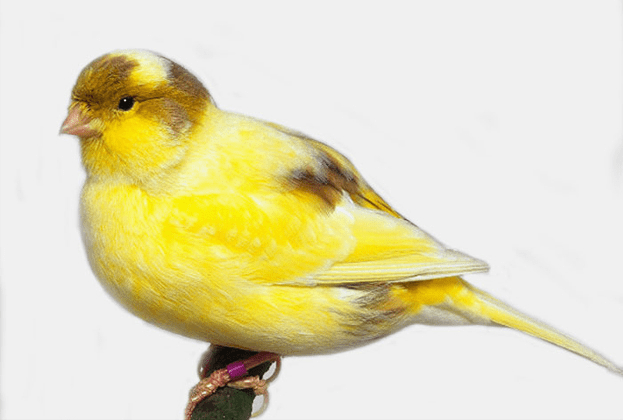
hibiscus bird, canary
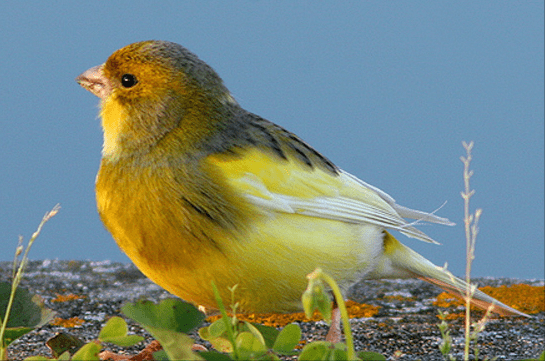
hibiscus bird, canary
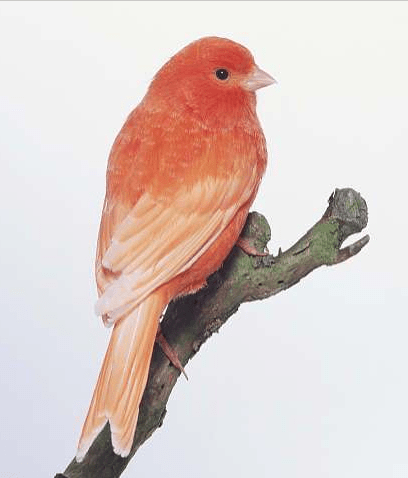
hibiscus bird, canary
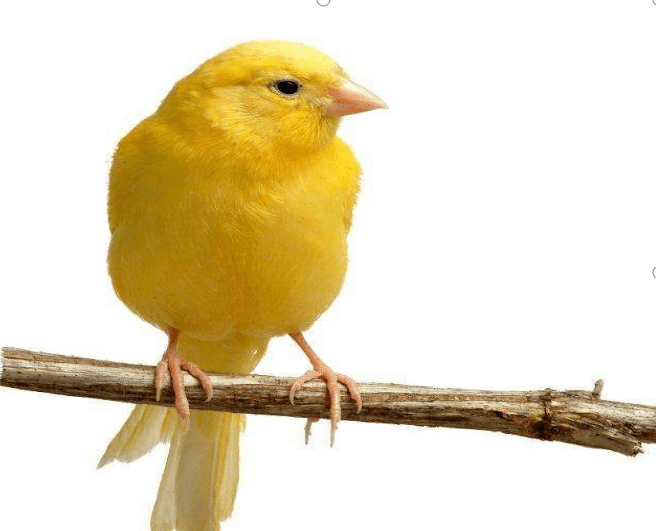
hibiscus bird, canary
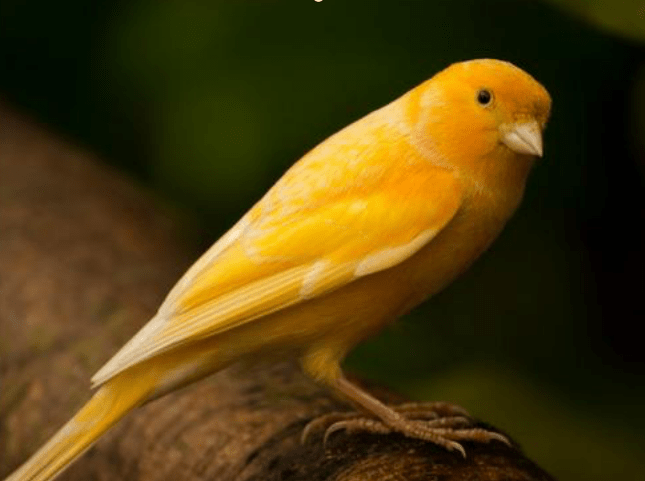
hibiscus bird, canary
Canary refers to the name of an ornamental bird. This bird has beautiful feathers and a clear chirp. It is regarded as the most noble species among caged birds and has been artificially bred in countless colors. Using canaries to describe women generally refers to women who are dependent on men and live a good material life, but are constrained and lose their freedom because of this. When canary and vase are used to describe women, the women they refer to are very beautiful.
Goldfinch: There are 24 species in the world, and China has 5 species, namely goldfinch, black-headed goldfinch, red-fronted goldfinch, European goldfinch and oriole.

Goldfinch
The goldfinch is also called the reed oriole. It has a thin, straight and pointed bill, a thick base, and is generally not swollen. The body color is mainly yellow-green, or vertically striped, and often has yellow or red spots. The back is chestnut brown. Dark feather stem pattern, golden waist, lower tail coverts and tail fundus are yellow, and there is a large golden patch on the upper and lower wings, which is eye-catching whether standing or flying.
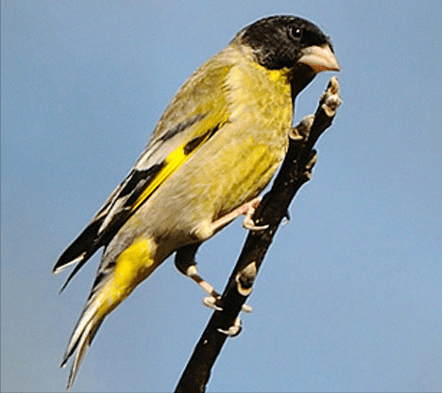
black-capped goldfinch
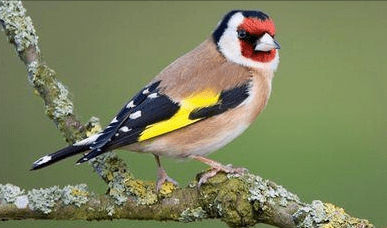
red-fronted goldfinch
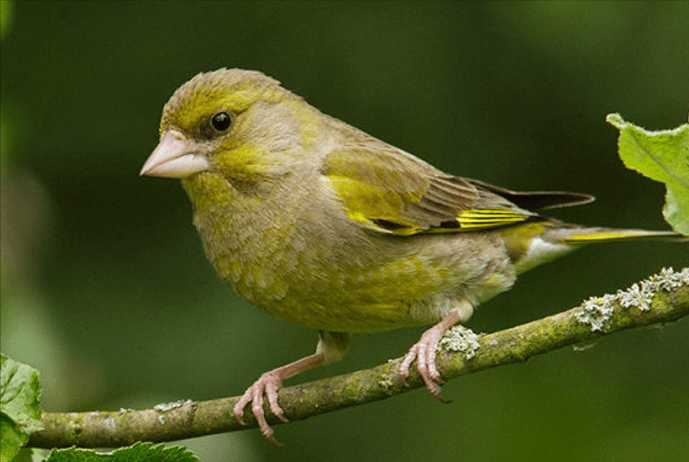
Goldfinch
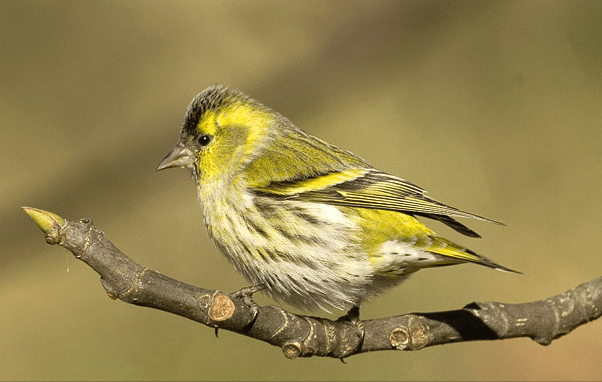
oriole
The saying that the mantis stalks the cicada and the oriole follows first came from "Zhuangzi Mountain Woods". The fact is that the oriole rarely eats mantises, not only mantises but even insects. Most orioles are mainly vegetarian, and their favorites are buds, leaves, fruits, seeds, etc. of various plants. Some orioles can say with certainty that they have never eaten a praying mantis in their lives, let alone had any idea of a praying mantis.
After talking about the yellow, let’s talk about the red: Suzaku, but this Suzaku is not the god Suzaku among the four Elephants-Are-Endangered.html">elephants: green dragon, white tiger, Suzaku, and Xuanwu!
Rosefinch: common rosefinch, red-browed rosefinch, red-breasted rosefinch, red-rumped rosefinch, wine-red rosefinch, eosinus rosefinch, great rosefinch, northern rosefinch, Tibetan rosefinch, blood sparrow, Taiwan rosefinch, long-tailed rosefinch, Chinese white-browed rosefinch
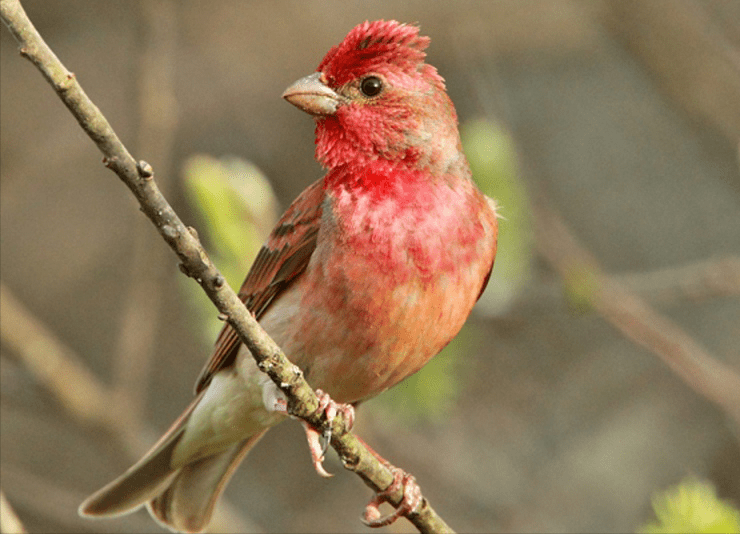
Common Suzaku

Red-browed Suzaku
The Red-browed Suzaku is 15 centimeters long and is a medium-sized Suzaku. The upper body is mottled brown, the eyebrow lines, cheeks, chest and waist are lavender pink, and the buttocks are almost white. The female bird is not pink, but has obvious yellow eyebrow lines. Both sexes resemble the smaller eosinophilus, but have a thicker beak and a proportionally longer tail.

Eosinus rosefinch
The red-browed rosefinch is very similar to the red-browed rosefinch, but it is smaller in size, has a thin beak and a short tail, and does not have the yellow-brown skin and flanks of the red-browed rosefinch. The forehead is not as bright as a rose-red eyebrow, and the forehead is densely covered with vertical lines, and the waist is lighter pink.
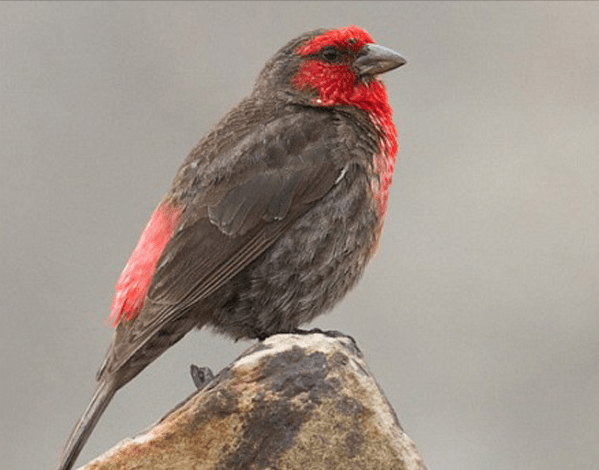
red-breasted rosefinch
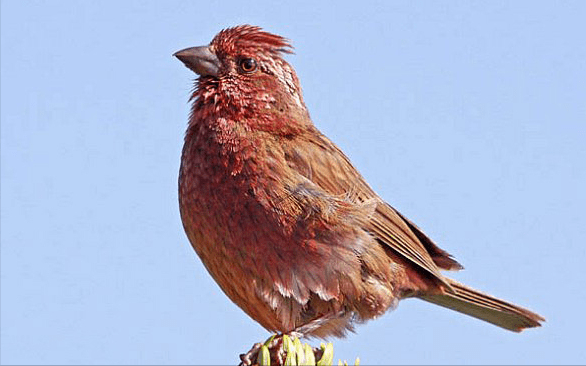
Red-rumped Suzaku

Burgundy Suzaku
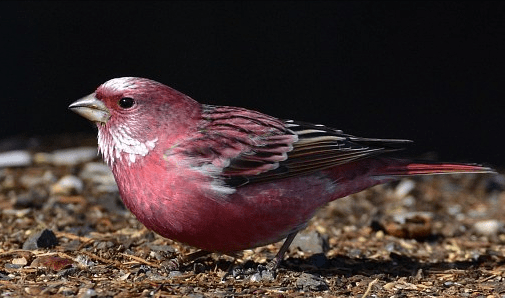
Northern Suzaku
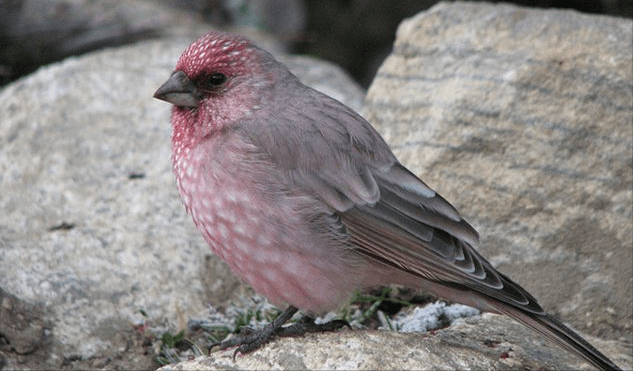
Big Suzaku
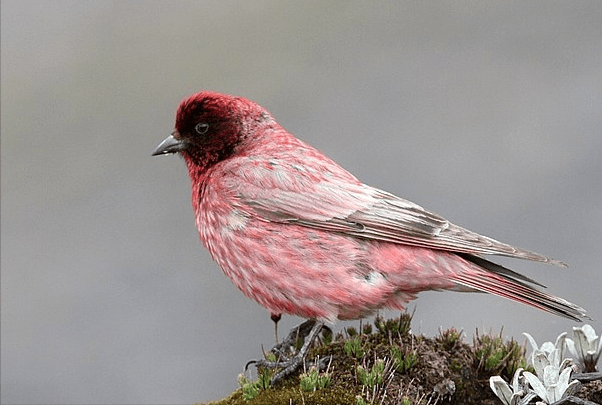
Hidden Suzaku
The head of the male Tibetan rosefinch is dark red with brilliance, and the throat is dark red with white spots; the back is grey-white, with rose-red tips on each feather, forming many spots; the waist is light rose-red; the wings are dark brown, with grayish white stains, and the tips of the feathers are stained Rose red or gray-white; tail dark brown, edge rose red; lower body, chest and abdomen rose red, with light yellow markings, lower abdomen and tail coverts and flanks gray white with rose red. The female bird is smaller than the male bird and resembles the male bird in shape. The whole body is brown with dark brown stripes or markings, not red, which is obviously different from the male bird.

blood sparrow
The male blood sparrow is bright red except for the eyes, wings and tail which are black (or light black); the beak is bright yellow; the female is dark olive green with lighter or yellowish tips; the waist is bright yellow and the beak is smaller dark.
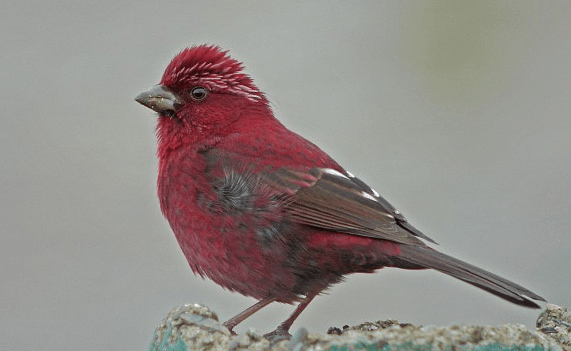
Taiwan Suzaku
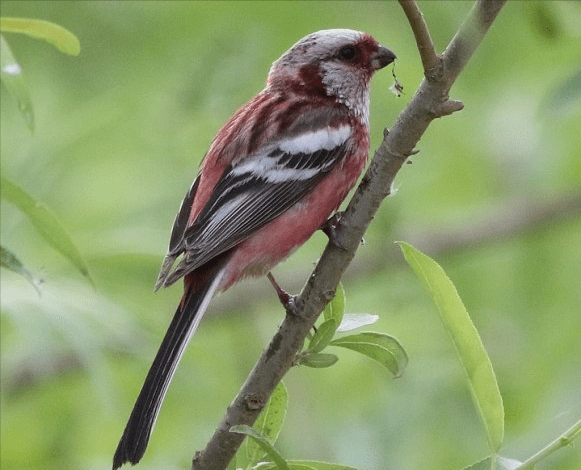
long-tailed rosefinch
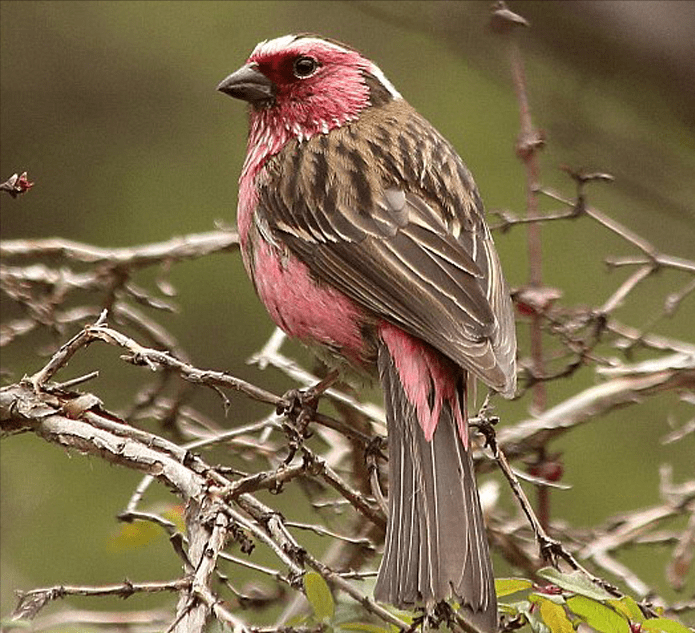
Chinese White-browed Suzaku
The Chinese white-browed rosefinch is a small alpine bird. Its forehead base and eyes are dark red. The forehead and a long and wide eyebrow line are white with pink and silky luster. It is very eye-catching on the dark head.
Climbing sparrows: Climbing sparrows build bag-shaped two-chamber nests, which are made of plant hairs or cotton-like hairs and hang on the tips of branches or under reed leaves. Therefore, climbing sparrows are also called hanging-nest tits. Mainly include: Chinese climbing sparrow, Eurasian climbing sparrow, white-crowned climbing sparrow, yellow-headed golden sparrow,
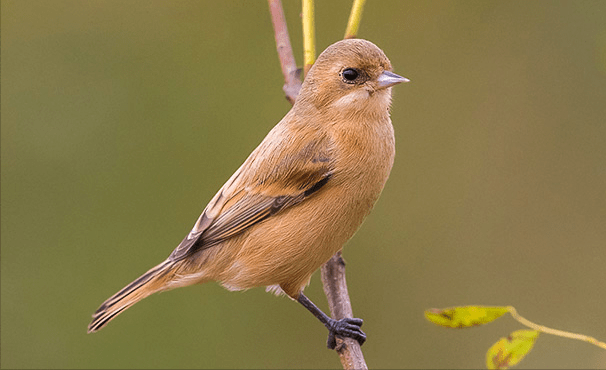
Chinese bird

Eurasian Sparrow
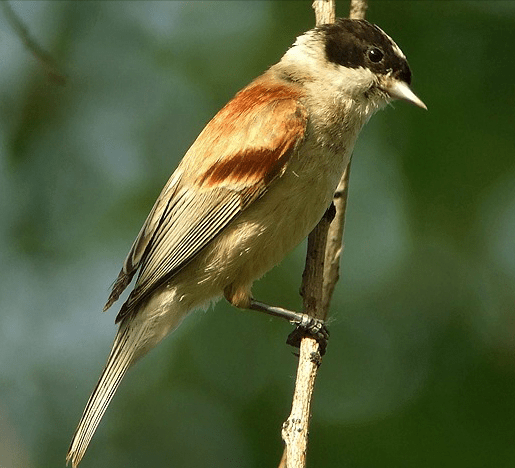
White-crowned Sparrow
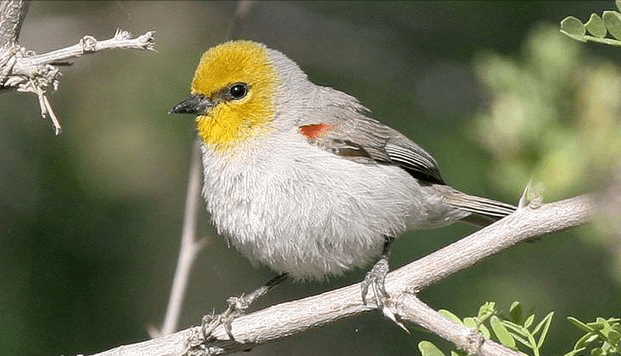
Yellow-headed Siskin
The yellow-headed siskin is a bird of the genus Yellow-headed Siskin in the family Finchidae. The upper body is gray, with a light yellow head and neck, a short and thin beak, black eyes, gray-white chest and abdomen, and brown shoulders. Male and female are similar.
Wood-climbing bird: You may not have heard of this name very often, but you may be familiar with its other name: tree-climbing bird. It climbs on tree trunks and often looks for insects to eat along the bark. Common ones include: Common Woodfinch, Alpine Woodfinch, Brown-throated Woodfinch, and Rusty-bellied Woodfinch. Common characteristics: The mouth is slender, curved downward, and the length is equivalent to the rest of the head or longer. The legs are short and strong; the tail is a very hard and pointed wedge-shaped tail, like a woodpecker, with long and straight tail feathers. Light brown. The hind toes and claws are particularly long and are good at climbing trees.
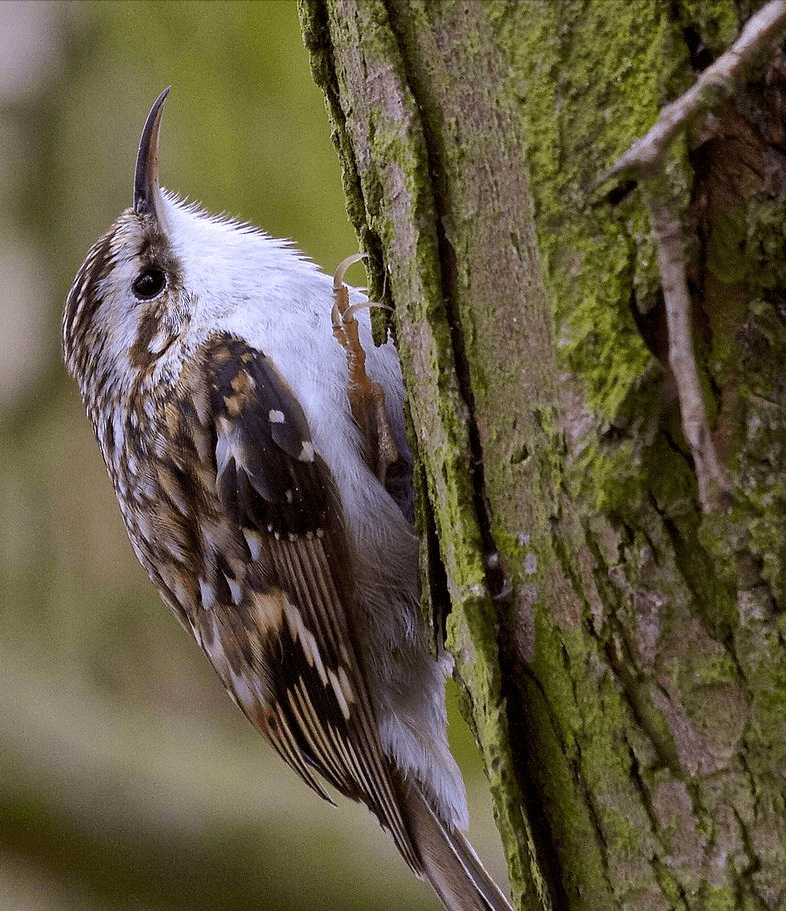
common tree sparrow

Alpine tree sparrow
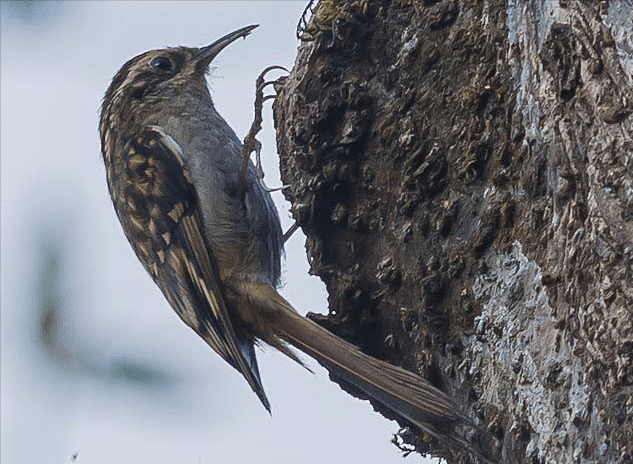
Brown-throated woodbird
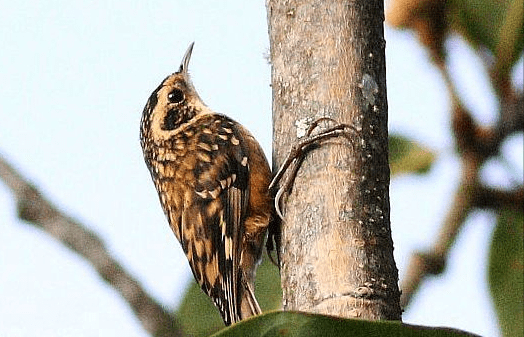
Rusty woodbird
Plumed finches: small in size, with conical beaks and often bright colors. Some species have extremely colorful plumage and swarm on the ground, feeding on seeds, berries and insects. The plum-flowered sparrow has a poor song and chirps mixedly, but it is loved by bird lovers because of its bright color, lively temperament and ability to adapt to various habitats. Including plum finches, spotted finches, common finches, parrot finches, grass finches, grass finches, fire finches, etc.
The red plum blossom bird has a very graceful shape, with colorful feathers all over its body. The male bird's body feathers are mainly red, scattered with many small white spots, resembling pearls, hence the name "Pearl Bird". Then, according to color, there are also light blue plum blossoms, yellow belly plum blossoms, green plum blossoms, etc.
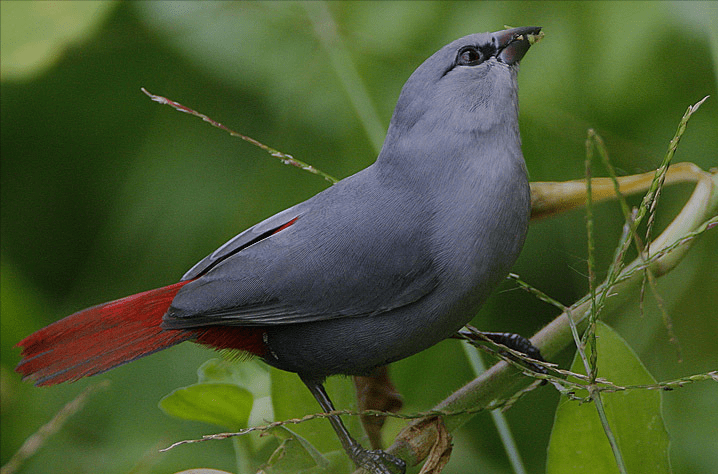
Pale Blue Plum Blossom

yellow-bellied plum blossom

green finches

Red plum blossom (male and female)
The summer feathers of the male red plum blossom bird are light brown from the forehead to the upper tail coverts and the entire upper body is tinged with vermilion, especially the base of the forehead and the upper tail coverts are darker red, and the shoulders, lower back and upper tail coverts have small round white feathers. Spots, both wings are dark brown, with small white end spots or dots on the ends of the wing coverts and inner flight feathers. The tail is black, and the outer tail feathers and ends are white or have white spots.
The female's upper body, including the wing coverts, is brown or ocher brown, the flight feathers are dark brown, and the shoulder and wing coverts and inner flight feathers have small white end spots or spots. The upper tail coverts are decorated with vermilion, the tail is dark brown, and the tips of the outer tail feathers are white. The eyes and around the eyes are black, and the sides of the head are grayish brown. The chin is yellowish white, the throat, chest and sides of the body are gray or light brown with gray, and the rest of the lower body is light orange.
The most common munia is the white-rumped munia, and other similar species are often introduced as ornamental birds from abroad and then bred.
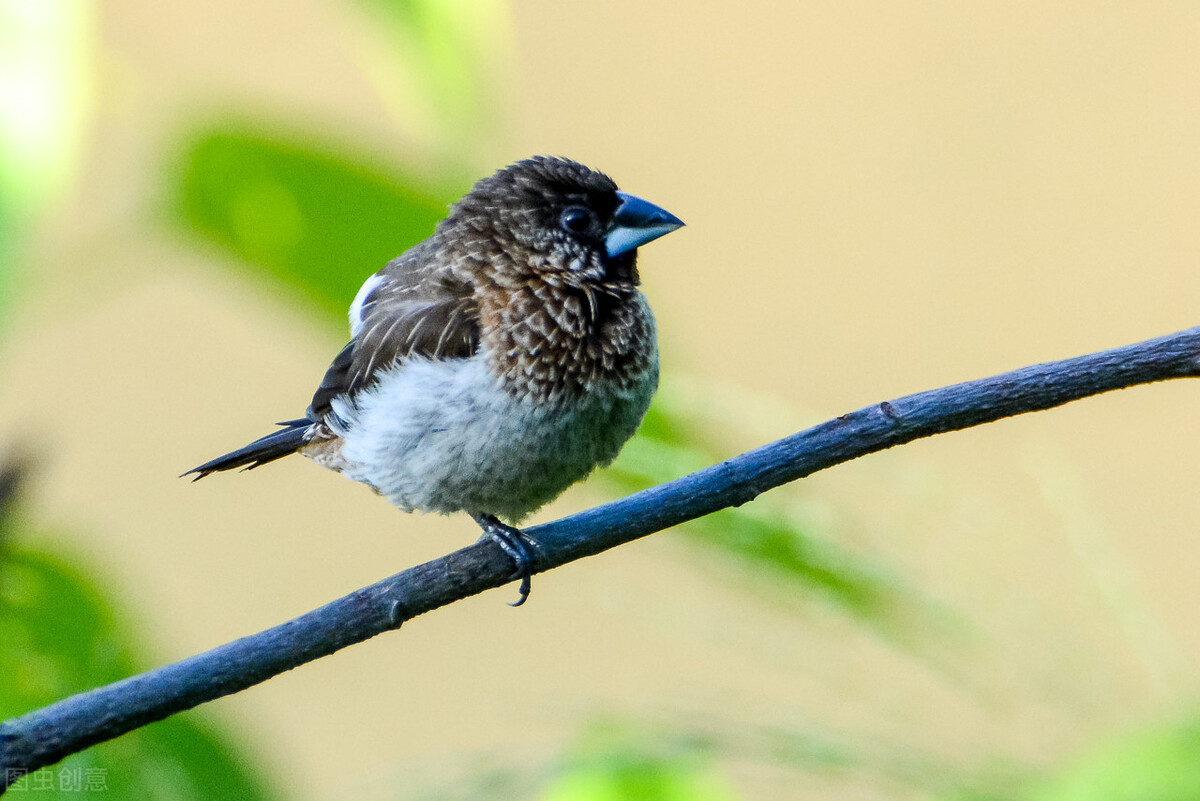
white-rumped munia

white-rumped munia
The male and female white-rumped munia have similar plumage colors. The forehead, the front of the head, the front of the eyes, around the eyes, the cheeks and the base of the mouth are all dark brown. The back of the head to the back and shoulders are dark sandy brown or gray brown, with white or yellowish-white skin and feathers. The waist is white, and the upper tail coverts are chestnut brown with brown-white feather shaft lines and reddish-brown feather tips. The tail is black, with a pointed tip and a wedge shape. The two wings are dark brown, and the outer feathers on the wing coverts and third-level flight feathers are the same color as the back, but darker than the back, and also have brown-white feather trunk lines. The ear coverts and sides of the neck are light brown or reddish brown, with fine white stripes or spots. The upper bill is black and the lower bill is blue-grey.
In addition, White Munia and Gray Munia (Grainbird) mainly appear as ornamental birds.
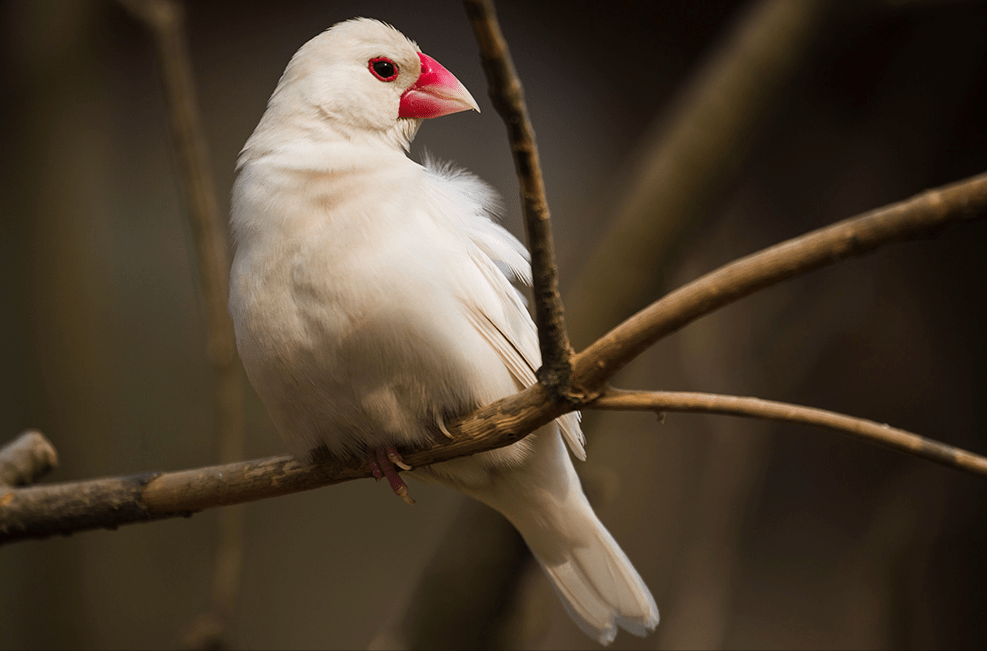
white bird
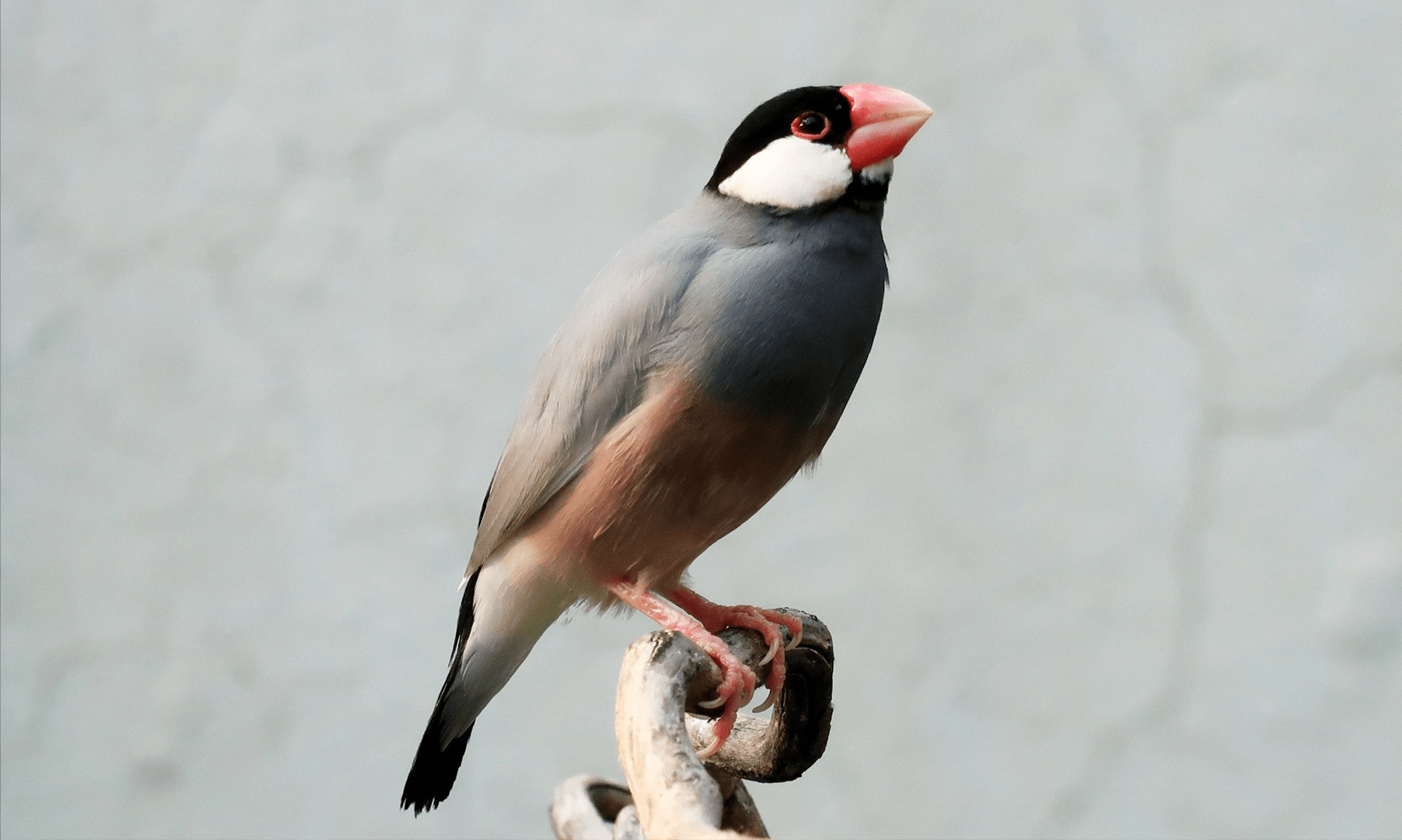
Gray Munia

Gray Munia-Grainbird
The grass sparrow is also called the gray munia. It has a pink beak, feet and a large white spot on the head. The back, shoulders, waist, upper wing coverts and inner flight feathers are blue-gray, the lower waist, upper tail coverts and tail feathers are black, and the flight feathers are light brown. With narrow gray margins. The chin and upper throat are black, the lower throat, neck sides, chest and breast sides are dove gray, the belly and sides are grape gray or grape red, and the lower tail coverts are white and sometimes slightly embellished with grape color.
Spot-bellied finches: Depending on the color of their wings, there are orange-winged finches, red-winged finches, and green-winged finches.
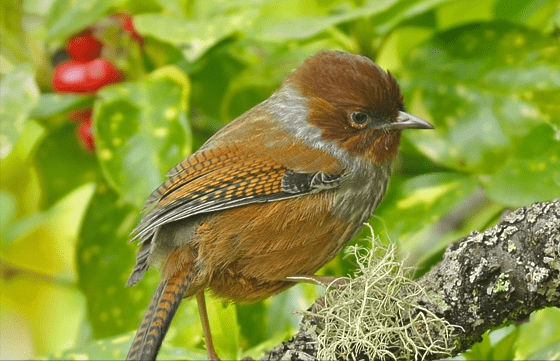
Orange-winged finch
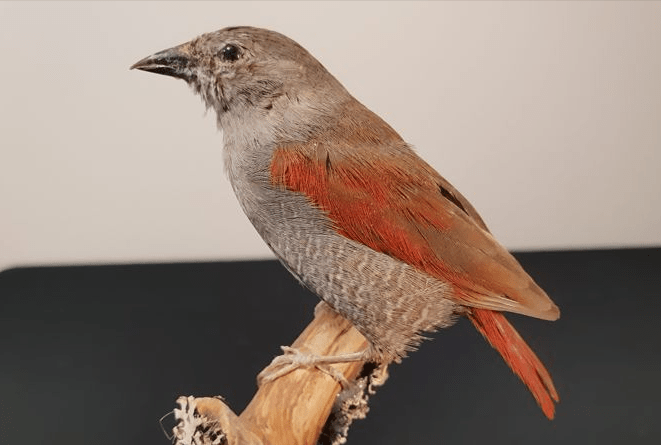
red-winged finch
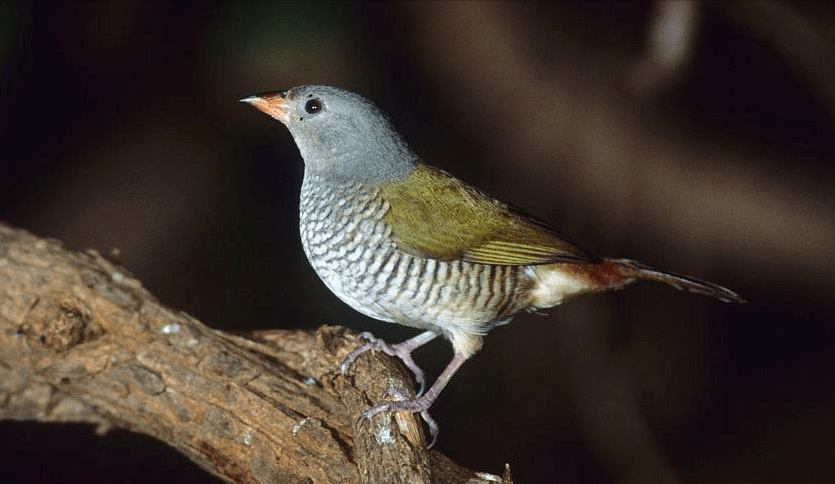
green-winged finch
The star finch is also known as the star finch. The red patch on the cheek of the male bird is wide and obvious, while the patch on the female bird is small and light in color. The same species are also common in the brown-headed star finch and the red-breasted star finch.
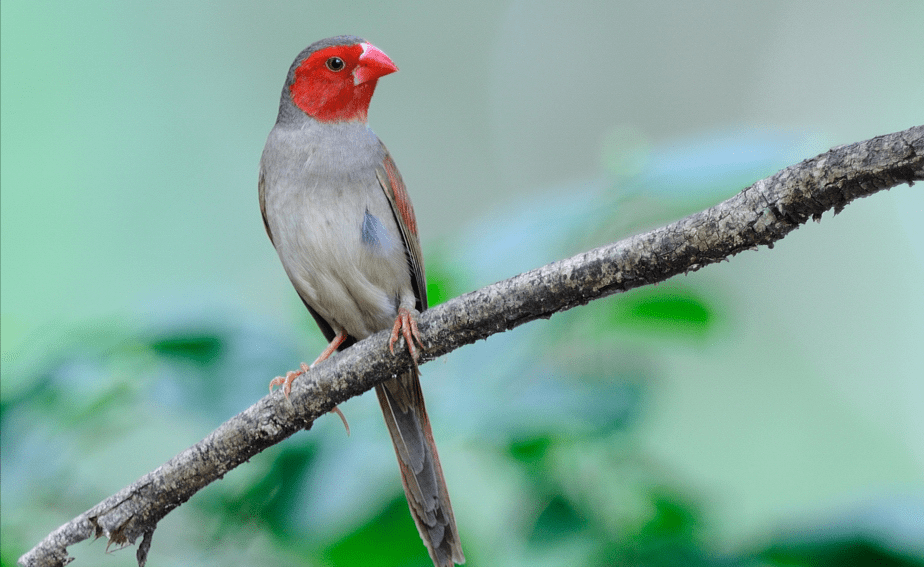
Red-breasted Star Sparrow
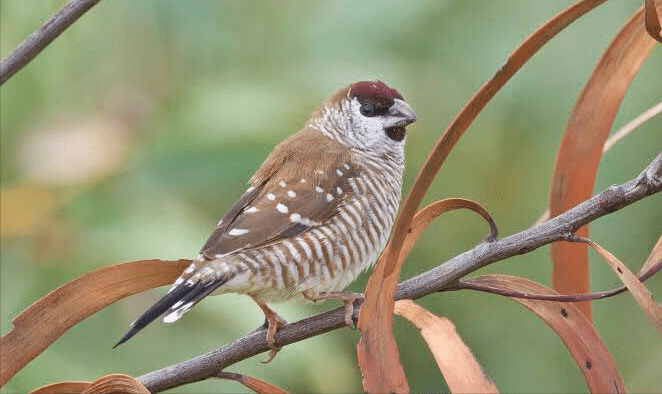
brown-headed star finch

star bird
Zebra finch, also known as Golden Mountain Pearl, has black and white markings on its chest and tail feathers. The male bird's flanks are brownish red with white spots. Except for the primary color species, all-white feathers are also common.
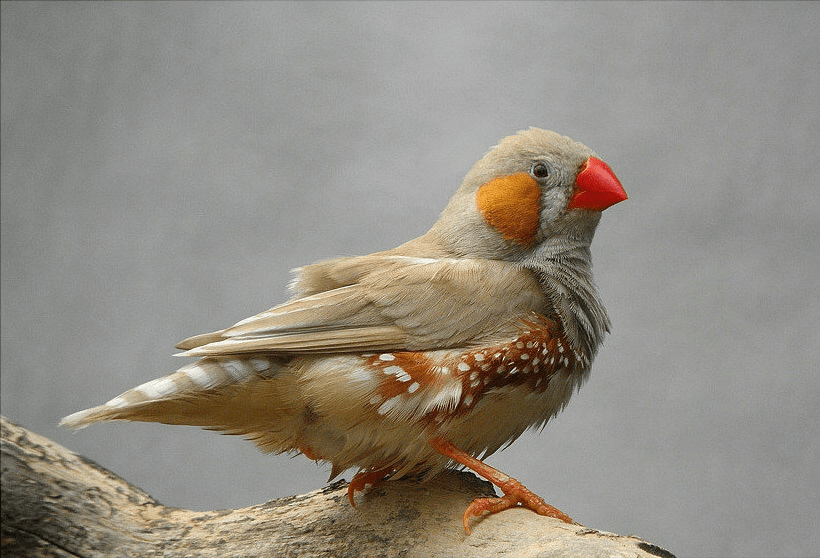
zebra finch
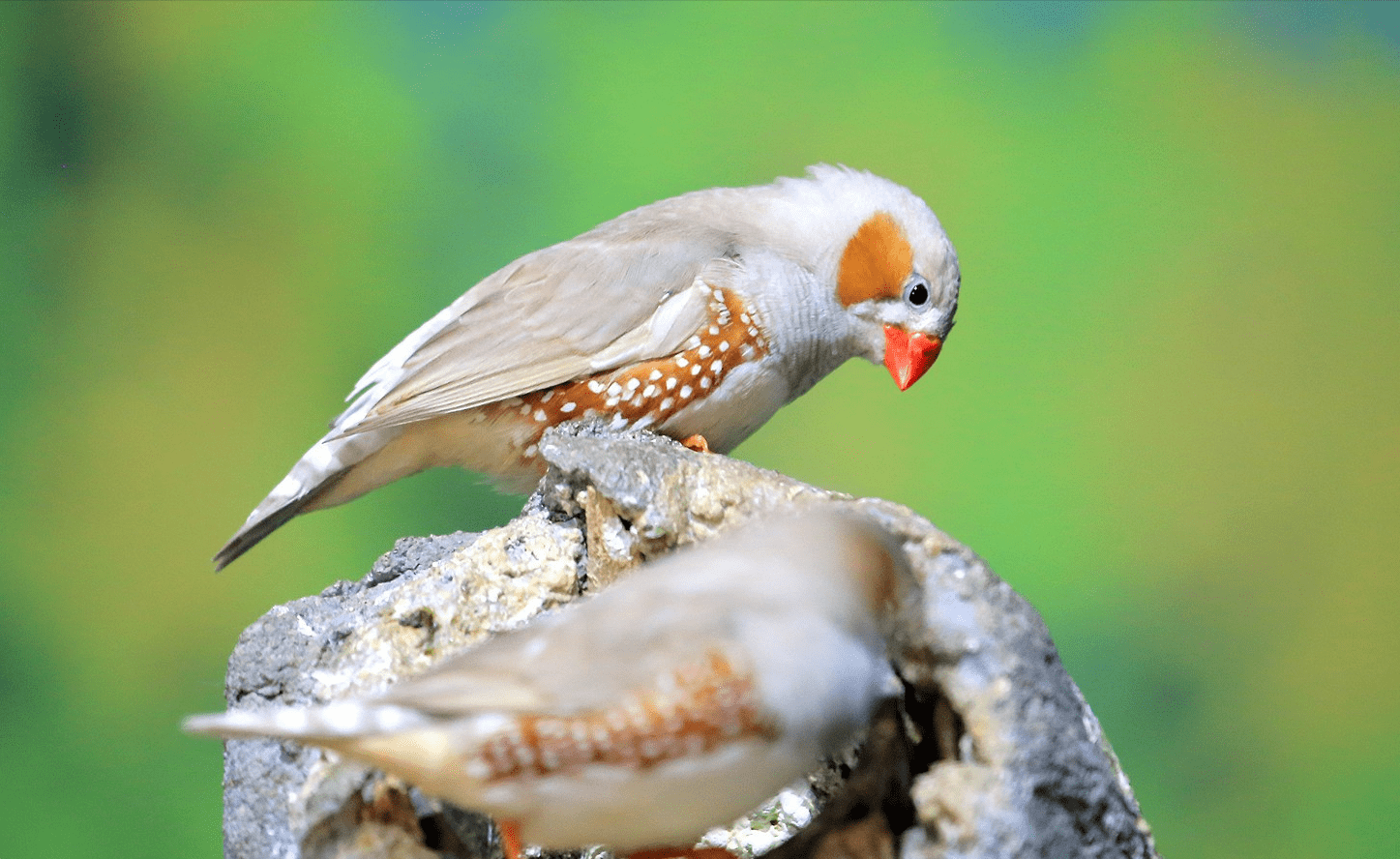
zebra finch
Firefinches: Mainly found in Africa, they are several red and brown or red and black birds. There are often small white spots on the lower side of the body. The pictures below are: Zebra-breasted Firefinch, Red-bellied Firefinch, Red-browed Firefinch, Red-billed Firefinch

Zebra-breasted Firefinch
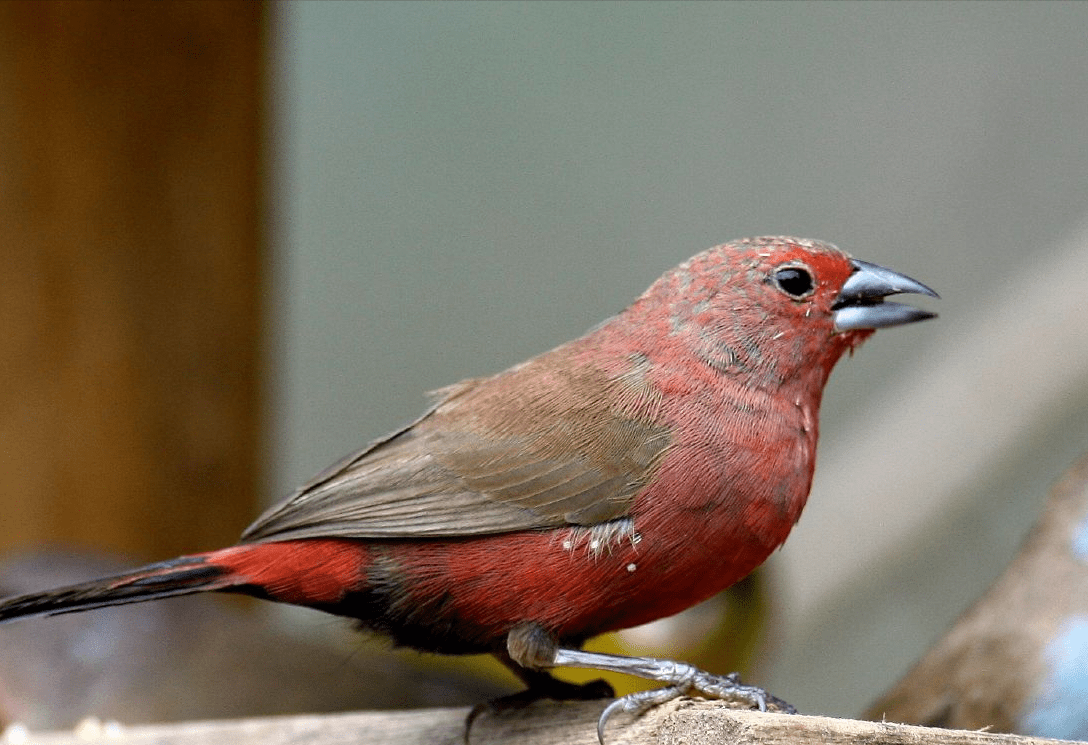
Firefinch
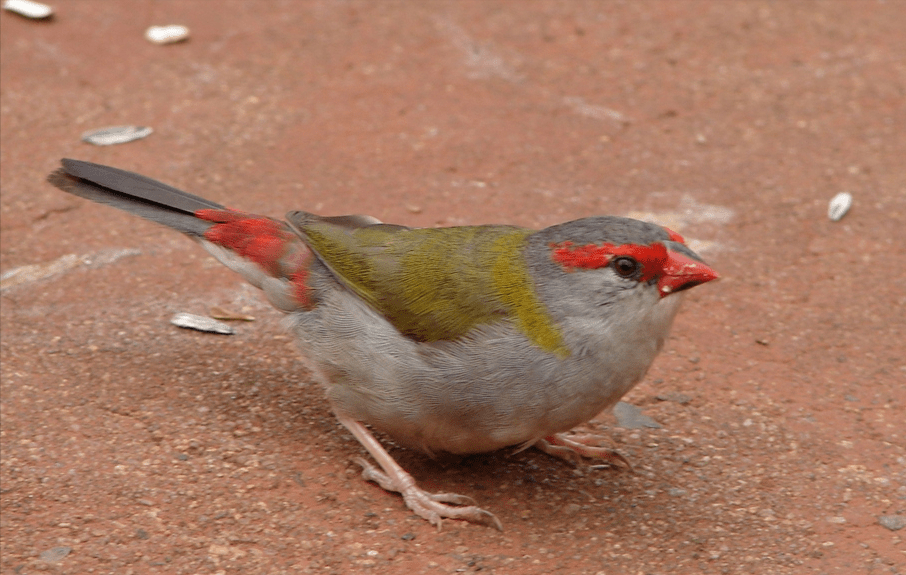
Red-browed Firetail
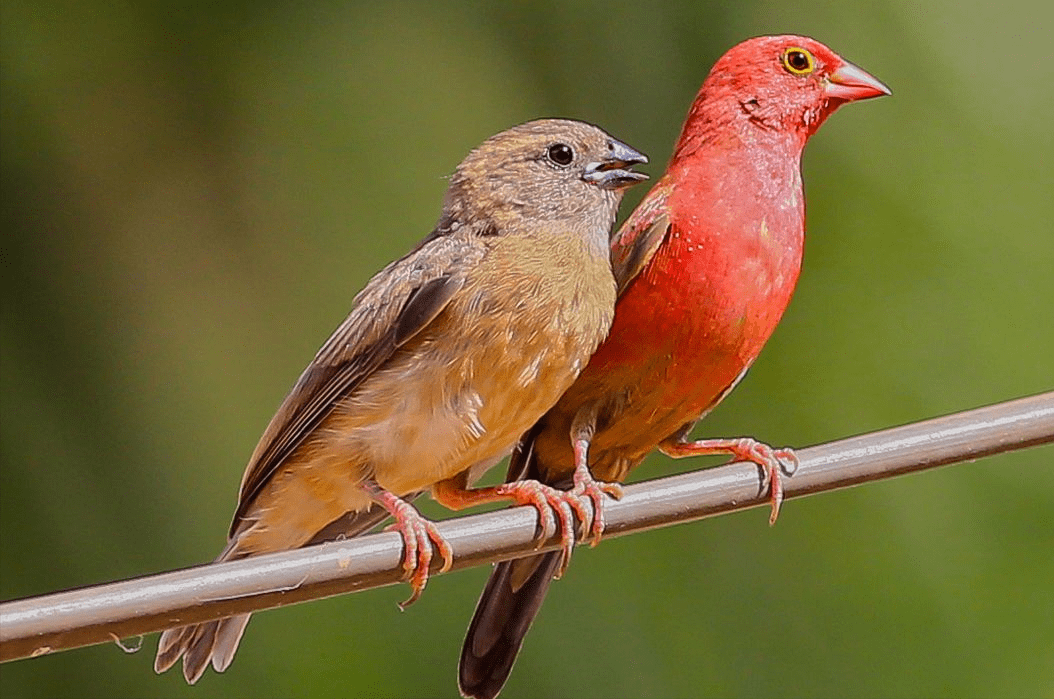
Red-billed firefinch
The most common and tame species in Africa is the red-billed firefinch (the Senegalese firefinch), which can be seen everywhere in bushes and gardens, and even enters homes. The male bird is light red and the female bird is brown; the waists of both male and female birds are red.
Other finches: Golden-naped Blackfinch, Red-headed Bullfinch, Grey-headed Bullfinch

golden-naped black sparrow
The golden-naped black finch is slightly smaller. The third-level flight feathers have white edges with fine lines. The male bird is impossible to mistake, with black body feathers, bright gold on the top of its head and nape, and golden shining patches on its shoulders. The wings and underparts of the female bird are warm brown, the upper back is gray, and the head is olive green and gray.

Bullfinch
The male red-headed bullfinch has a black beak base, forehead, eye area, eye area and chin, with a light gray-white circle around it, and the top of the head, pillow and back of the neck are brownish-red or dark orange-red. The small and middle coverts on the back, shoulders and wings are gray, the base of the large coverts are black and the tips are gray, and the flight feathers are black with a blue luster. The waist is white, and the upper tail coverts and tail glow are black. The sides of the head, neck, throat, chest and flanks are dark red or orange-red, the upper coverts from the abdomen to the tail are gray or white, and the axillary feathers and underwing coverts are white. The female bird is similar to the male bird, but the head, pillow, and back of the neck are yellow-green, and the throat, chest, and sides are grape gray or dark gray with brown, and the rest are the same as the male bird.

gray-headed bullfinch
The gray-headed bullfinch is slightly larger. The mouth is thick and slightly hooked. Like other gray finches but adults have gray heads. The chest and abdomen of the male bird are dark orange. The female's lower body and upper back are warm brown, with black stripes on her back. The young bird looks like a female but has a completely brown head with only a very small black eye patch. The white waist and gray-white wing spots are clearly visible when flying.
Mountain pepper birds: including mountain pepper birds, cuckoo hawks [jú], forest hawks [jú], etc. The body is slender; the bill is short and the base is slightly wider, the tip is curved, the tip of the upper bill is slightly notched, the nostrils are sparsely feathered, the wings are medium, slightly longer and pointed than the shrike; there are 10 primary flight feathers, the tail is round or flat, slender , 12 tail feathers, short and thin tarsus, and shield-like scales on the front edge. The legs are short and weak, suitable for arboreal habitat. The body feathers are soft and the trunk feathers of the waist feathers are vertical and hard. Representative species include the Red Mountain Pepper Bird and the Great Rhinoceros

Red Mountain Pepper Bird-Male
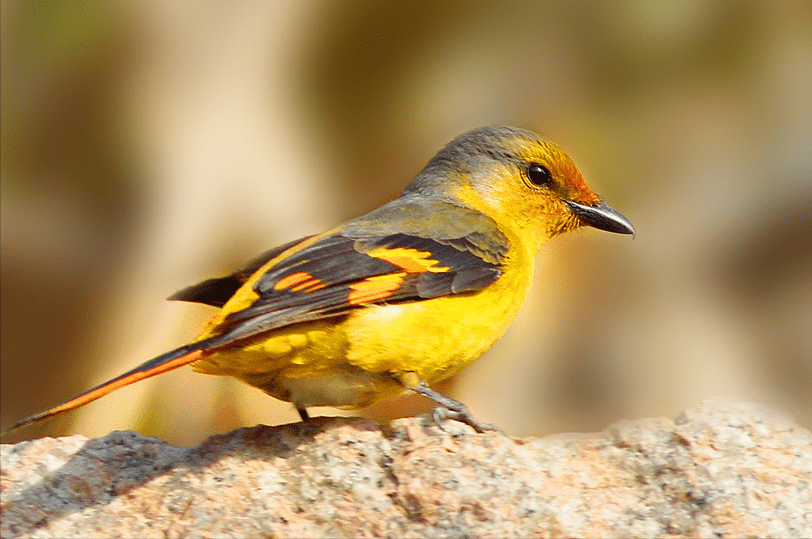
Red Mountain Pepper Bird-Female

big cuckoo
The Hainan subspecies of Great Cuckoo is endemic to China. Distributed in Hainan and other places. The type origin of this species is Hainan Island.
Wagtails: including wagtails and pipits (liù). Body shape is slender. The beak is slender, with a notch at the tip; the wing tips are long, and the inner flight feathers are extremely long, almost flush with the wing tips; the tail is slender, and the outer tail feathers are white, often swinging up and down regularly; the legs are slender and the hind toes are long and slender. It has long claws suitable for walking on the ground. Lives near wetlands and nests in caves. Common ones include: gray wagtail, white wagtail, mountain wagtail, field pipit (Risky's pipit), tree pipit, wood pipit, mountain pipit, meadow pipit, and water pipit.
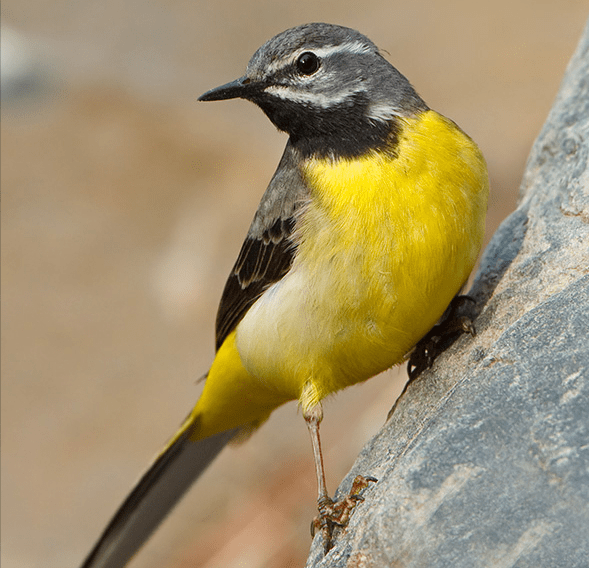
gray wagtail

white wagtail
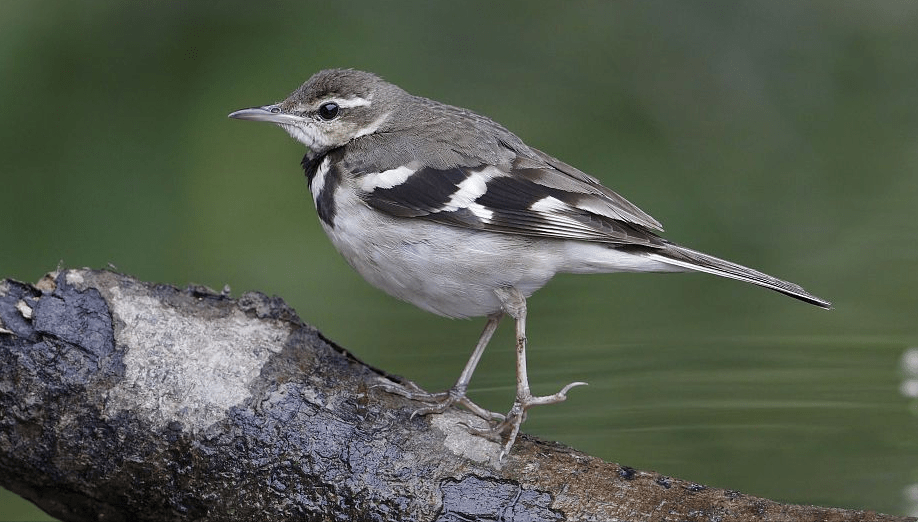
Mountain Wagtail

Lappipit (Leather's Pipit)
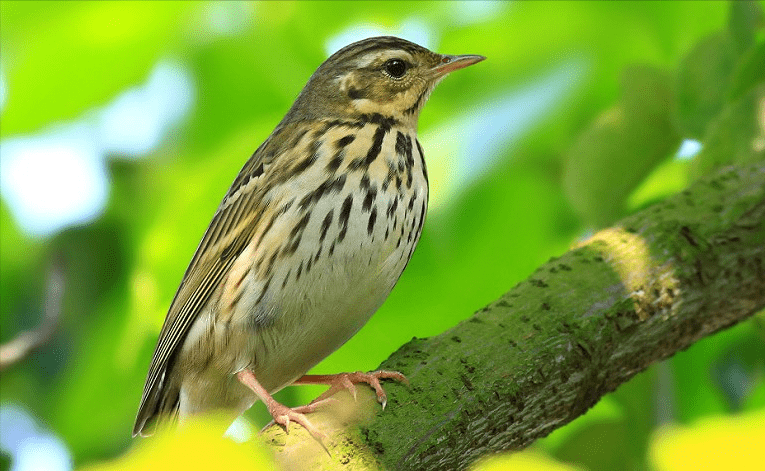
Tree Pipit

Wood Pipit
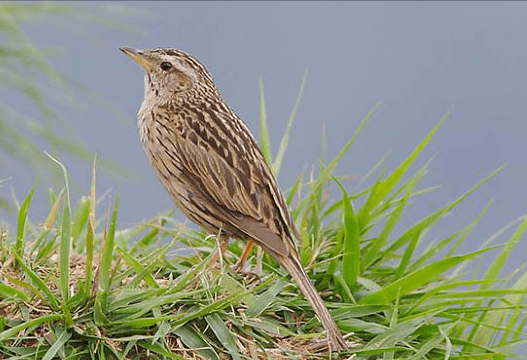
Woodpipit
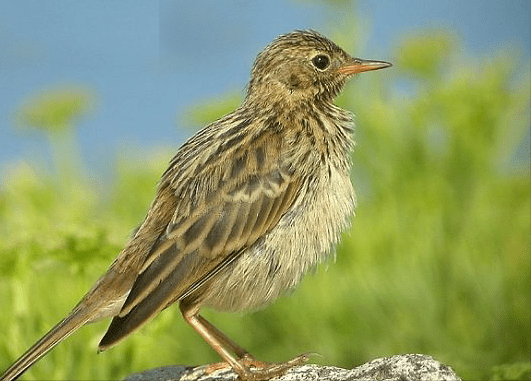
meadowlark

water pipit
蓓 (pinyin shī) type: often forages on tree trunks, branches, rocks and other places. It has a small body, a short head and neck, and a very short tail. It has a very special living habit: it likes to build nests in holes, and it also stores food for winter. It is also the only bird that can climb trees head down and tail up (woodpeckers can only climb up). ). The common ones are: common pus, blackhead pus, Yunnan pus, and giant pus.
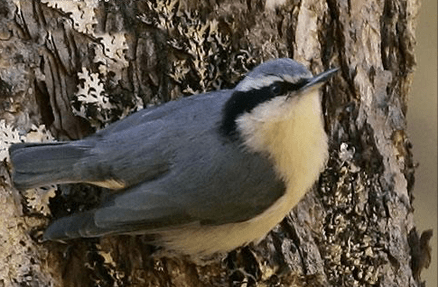
Yunnan
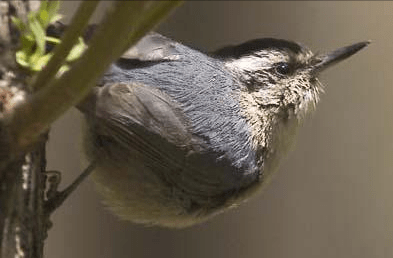
Blackhead

giant
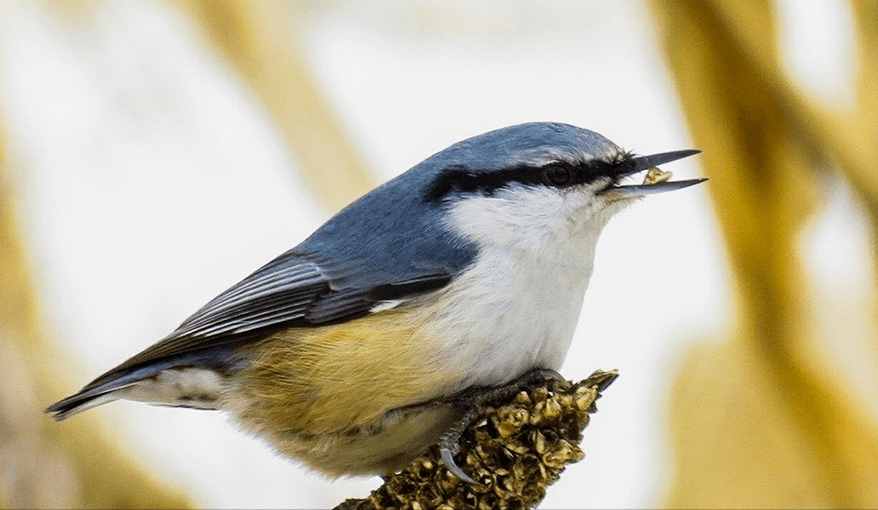
common turtle
Red-winged Whirling: The Red-winged Whirling is a non-arboreal alpine montane bird. It mainly inhabits the cliffs and steep slopes of mountains and is known as the "butterfly bird on the cliff".
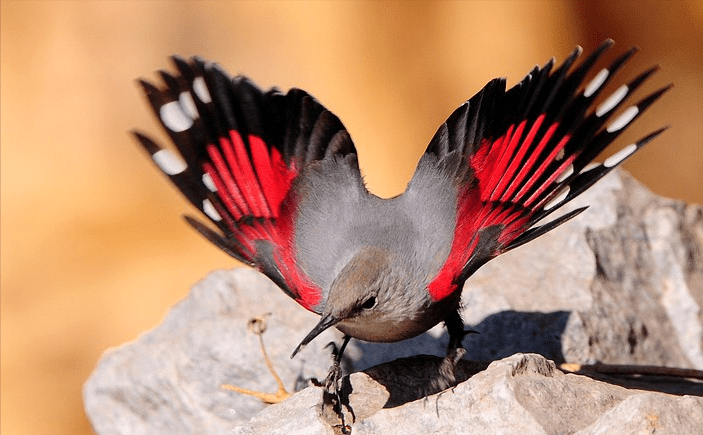
red-winged wall sparrow
Bulbuls:
There are 139 species in this category, which are small and medium-sized birds with large changes in beak shape and often with beaks and whiskers. Common ones include: White-headed Bulbul, White-throated Bulbul, Black Short-legged Bulbul, Collared Bulbul, Red-eared Bulbul, Yellow-bellied Bulbul, White-throated Brown-crested Bulbul, Chestnut-backed Bulbul, Gray Short-legged Bulbul, Green-winged Bulbul Footed Bulbul, Yellow-browed Bulbul, Gray-eyed Bulbul, Chestnut-eared Bulbul, Black-headed Bulbul, Striped-throated Bulbul, Yellow-green Bulbul, Black-crowned Bulbul, White-cheeked Bulbul, Longitudinal-striped Green Bulbul, Taiwanese Bulbul, Yellow-rumped Bulbul, Yellow-crowned Bulbul, Crested Sparrow-billed Bulbul, Orange-bellied Bulbul, Blue-winged Bulbul, Golden-leaf Bulbul, Black-winged Bulbul, White-browed and Yellow-rumped Bulbul, etc.

Bald Bulbul
The white-headed bulbul, also known as the white-headed bulbul, together with the sparrow and the green eye, are collectively known as the "Three Treasures of the City"
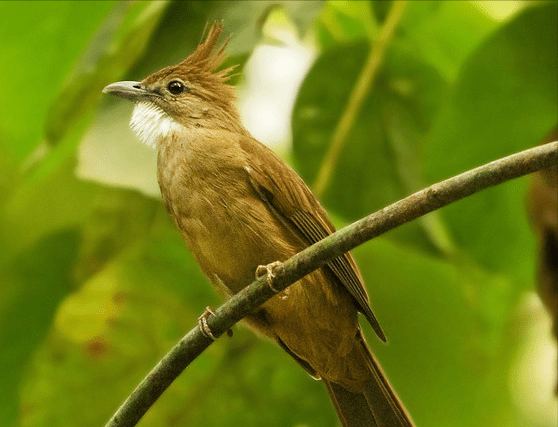
White-throated Bulbul
White-throated Bulbul's head and feathers are brown, its chin and throat are white, and the rest of its underparts are olive yellow.

Black Short-legged Bulbul Southeast Asian species
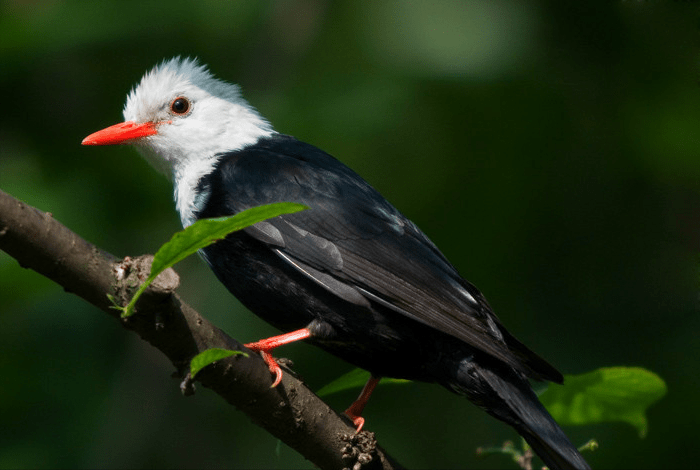
black short-legged bulbul
There are two types of black short-footed bulbuls. One is the forehead, top of the head, side of the head, neck, chin, throat, etc. The entire head and neck are white (Southeast Asian species). The other is completely black or dark brown with upper body feathers. They also have a blue-green luster, and some have grayer backs and lower bodies.
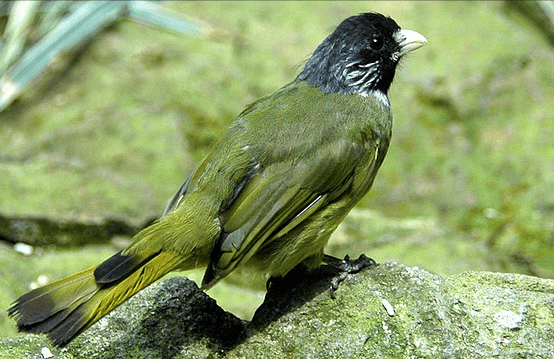
Collared Bulbul
The common names of Collared Bulbul are Sheep-headed Bulbul, Green Parrot-billed Bulbul and Green-crested Bulbul. I took a photo of a group of nearly a thousand flying birds in Wuyuan.

Red-eared Bulbul
The red-eared bulbul has a towering black crest on its head, and a cluster of deep red feathers behind and below its eyes, forming a red spot; its ear feathers and cheeks are white, immediately connected to the bottom of the red spot.
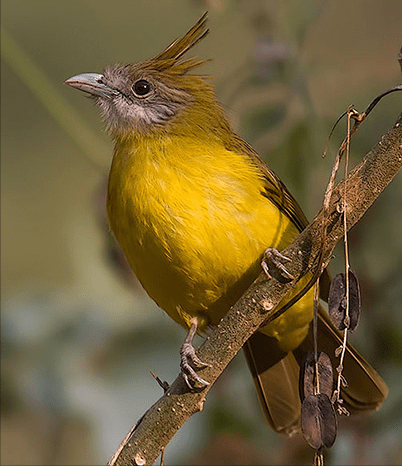
Yellow-bellied Bulbul
The Yellow-bellied Bulbul is a slightly larger brown bulb. The head is olive brown with dark brown feather crest. The white throat is swollen and the lower body is yellow.
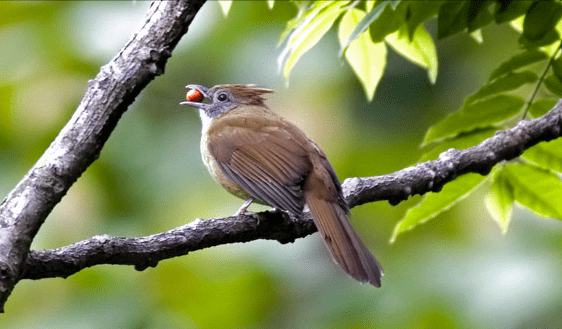
White-throated Bulbul
The white-throated brown-crested bulbul's crown feathers are long, pointed and scattered. The upper body is olive, the side of the head is gray, the lower body is yellow, and the white throat is bulging with a mustache. It is easy to be confused with the Yellow-bellied Bulbul. The difference is that the underparts are duller and the belly is lighter yellow.
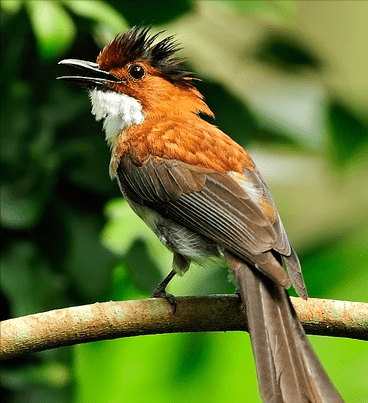
Chestnut-backed Bulbul
Chestnut-backed short-footed bulbul has chestnut brown upper body, black head and crest. The back is chestnut, the wings and tail are dark brown with white or gray-white feather edges. The chin and throat are white, the chest and flanks are gray-white, and the center of the abdomen and lower tail coverts are white.

gray short-footed bulbul
The gray short-footed bulbul has a black head and short crest, dark gray upper body, gray-brown ear feathers, and olive-green-yellow surface on both wings. The outer coverts and inner flight feathers are olive yellow, forming large green-yellow spots on the wings, which are very eye-catching on the gray upper body.
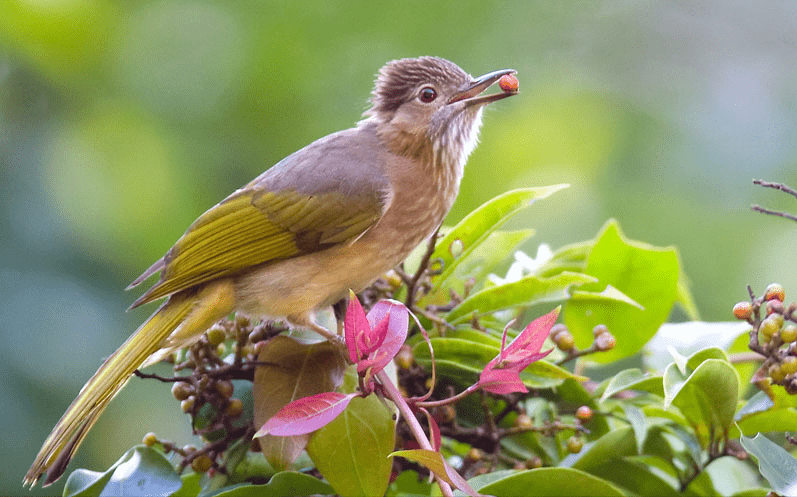
Green-winged Bulbul
The green-winged short-footed bulbul has pointed feathers on its head, chestnut brown with white rachis stripes, which are very eye-catching on the dark head. The upper body is gray brown with olive green, and the wings and tail are bright olive green. The ears and sides of the neck are reddish brown, the chin and throat are gray, the chest is grayish brown with white vertical stripes, and the lower tail coverts are light yellow.
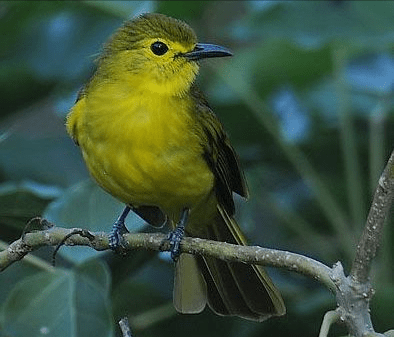
Yellow-browed Bulbul
The yellow-browed bulbul has yellow underparts, olive-green upperparts, and yellow tattooed eyebrows.
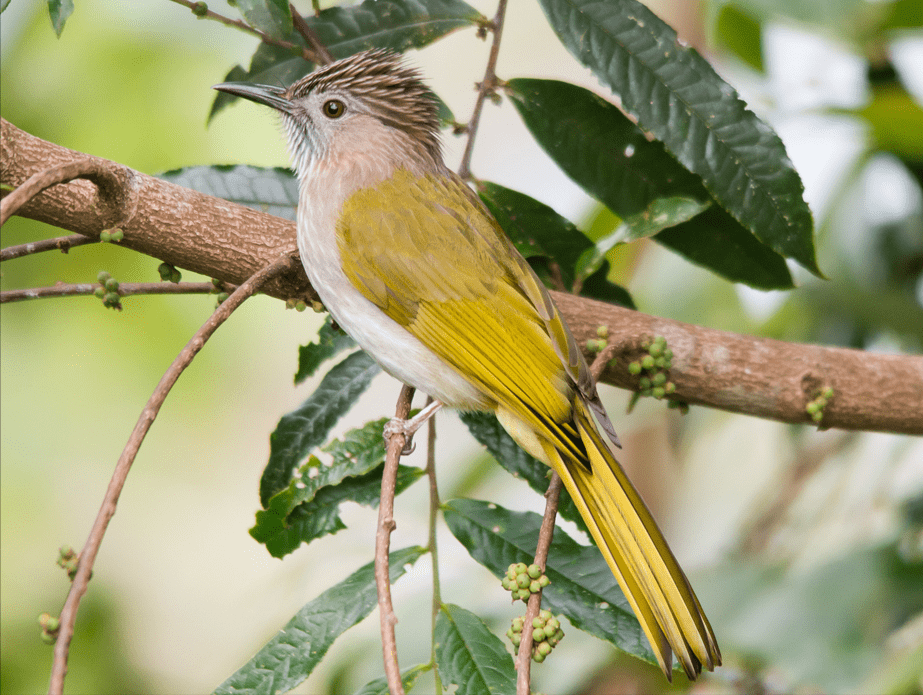
Grey-eyed Bulbul
The gray-eyed bulbul is a medium-sized, pale olive-colored bulb. Characterized by white or light gray eyes. The crest is short, the eyebrow lines are blurred, and the forehead to the top of the head, including the crest, is dark brown. The upper body is olive green, the tail is tan, and the eyes and cheeks are olive gray or light olive yellow. Throat grayish white. The skin on the lower body is yellowish. The iris is gray or white; the mouth is pink-grey; the feet are pink.
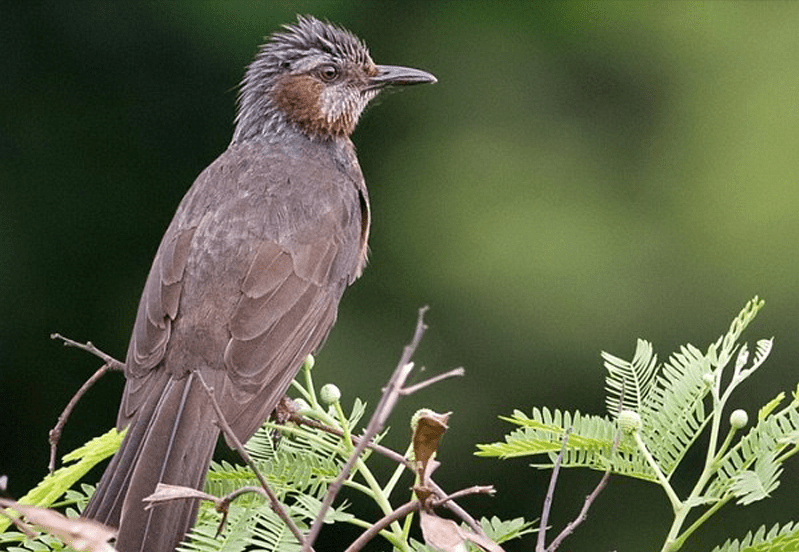
Chestnut-eared Bulbul
The Chestnut-eared Bulbul is a large gray bulb. There is a slight crest on the top of the head, gray from the top of the head to the back pillow, chestnut on the ear coverts and sides of the neck.
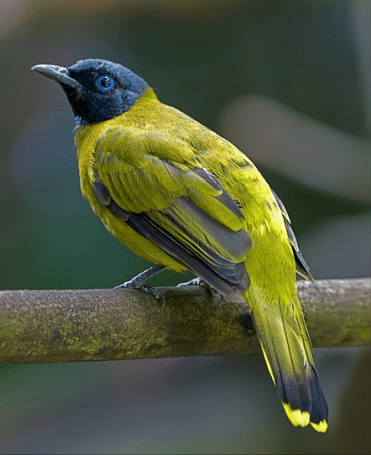
Black-headed Bulbul
The Black-headed Bulbul is a medium-sized yellowish bulb. It is characterized by a black head, black throat and blue eyes. The upper body is yellow-olive; the wings and tail are black with an obvious yellow tail end; the lower body is greenish-yellow. It differs from the Black-crowned Yellow Bulbul in that it has no crest and has a yellow tail.
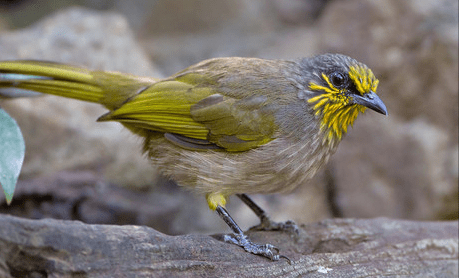
Striped-throated Bulbul
The striped-throated bulbul is a medium-sized greenish bulb. It is characterized by yellow stripes on the top of the head, cheeks, chin and throat. Upper body olive green. The chest and abdomen are dark gray, and the perianal and undertail coverts are bright yellow. Impossible to be confused with any other species of bulbul.
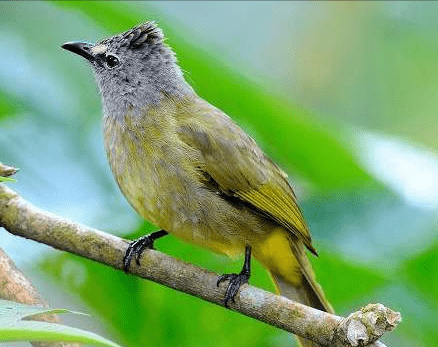
Yellow-green Bulbul
The yellow-green bulbul has dark brown feathers with gray edges from the forehead to the top of the head. The eyes are black first, and there is a thick white stripe on it from the back of the nose to the eyes, which is very eye-catching on the black head. Upper body olive green brown. The chin and throat are light gray or off-white, the chest is gray-brown with olive-yellow feather edges, and the lower tail coverts are bright yellow. It is obviously different from other bulbuls and is not difficult to identify in the wild.
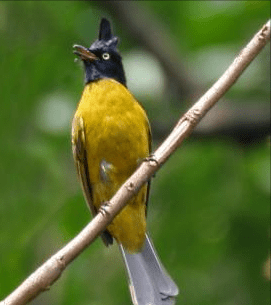
Black-crowned Bulbul
The black-crested bulbul has a black head and crown feathers, a yellow-green body, and brown tail coverts.

White-cheeked Bulbul
The White-cheeked Bulbul is a medium-sized olive-brown bulb. The brown crown feathers are long and curved forward. The face, chin and throat are black, with white cheek patches. The underparts are almost white, and the feathers under the tail are light yellow. The tail is black and the end is white. Impossible to be confused with any other bulbul.
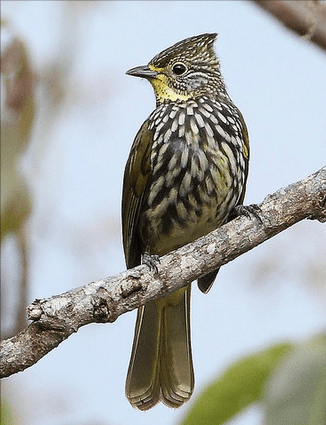
Green Bulbul
The vertical-striped green bulbul is medium-sized, with a green-brown head with obvious crest feathers and thin white vertical stripes on it. The upper body is olive green with thin white vertical stripes. The eye rims are light yellow. The throat, tail and coverts are yellow, and the rest of the lower body is dark gray-black with yellow-white vertical stripes.
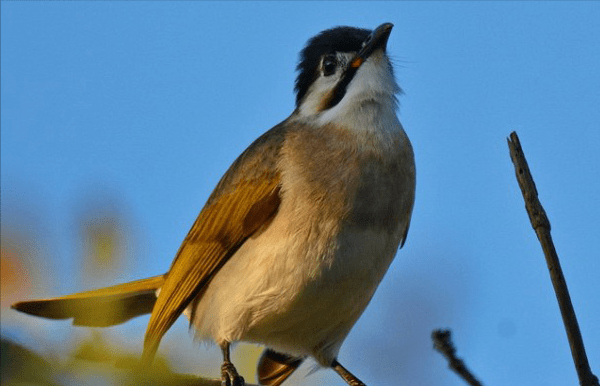
Taiwan Bulbul
The appearance and feather color of the Taiwanese Bulbul and the White-headed Bulbul are very similar, but the White-headed Bulbul is white from the eyes to the pillow, forming a wide white pillow belt; the Taiwanese Bulbul is completely black from the top of the head to the back of the neck. No leucorrhea on pillow, cheeks and ear feathers white. There is a small orange-red spot at the base of the lower mouth.
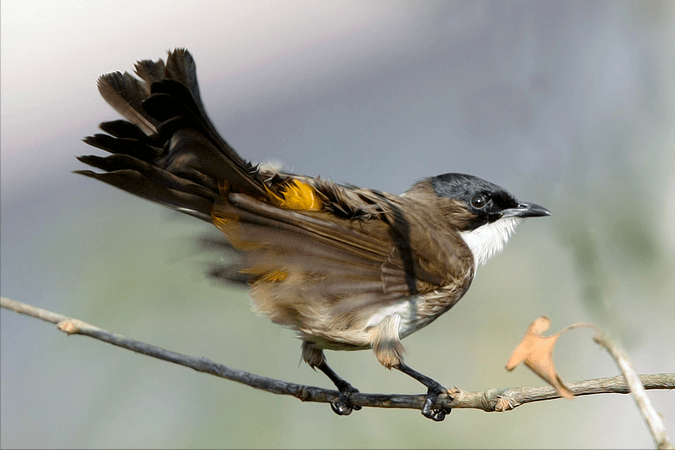
Yellow-rumped Bulbul
The yellow-rumped bulbul is similar in appearance and size to the red-eared bulbul. It is black from the forehead to the top of the head, and has no crest or a short and unclear crest. There are small red spots on both sides of the base of the lower bill, and the feathers under the tail are bright yellow.
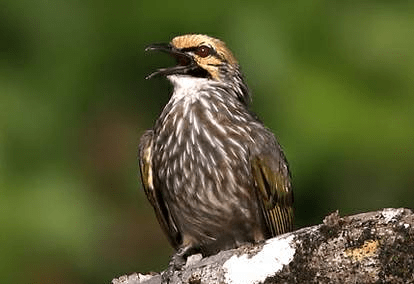
Yellow-crowned Bulbul
The yellow-crowned bulbul is a key protected and vulnerable species in China. Although its population has dropped sharply in other countries, fortunately, it has not been "extinct" in Singapore, with about 200 individuals preserved.

Crested Bulbul
The Crested Sparrow-billed Bulbul has a short, ivory-colored or cream-colored bill, a gray forehead and face, a black head, and a black feather crest that stands erect toward the front. The upper body is olive green, the lower body is yellow-green, and the tail feathers are yellow-green with broad dark brown end spots.
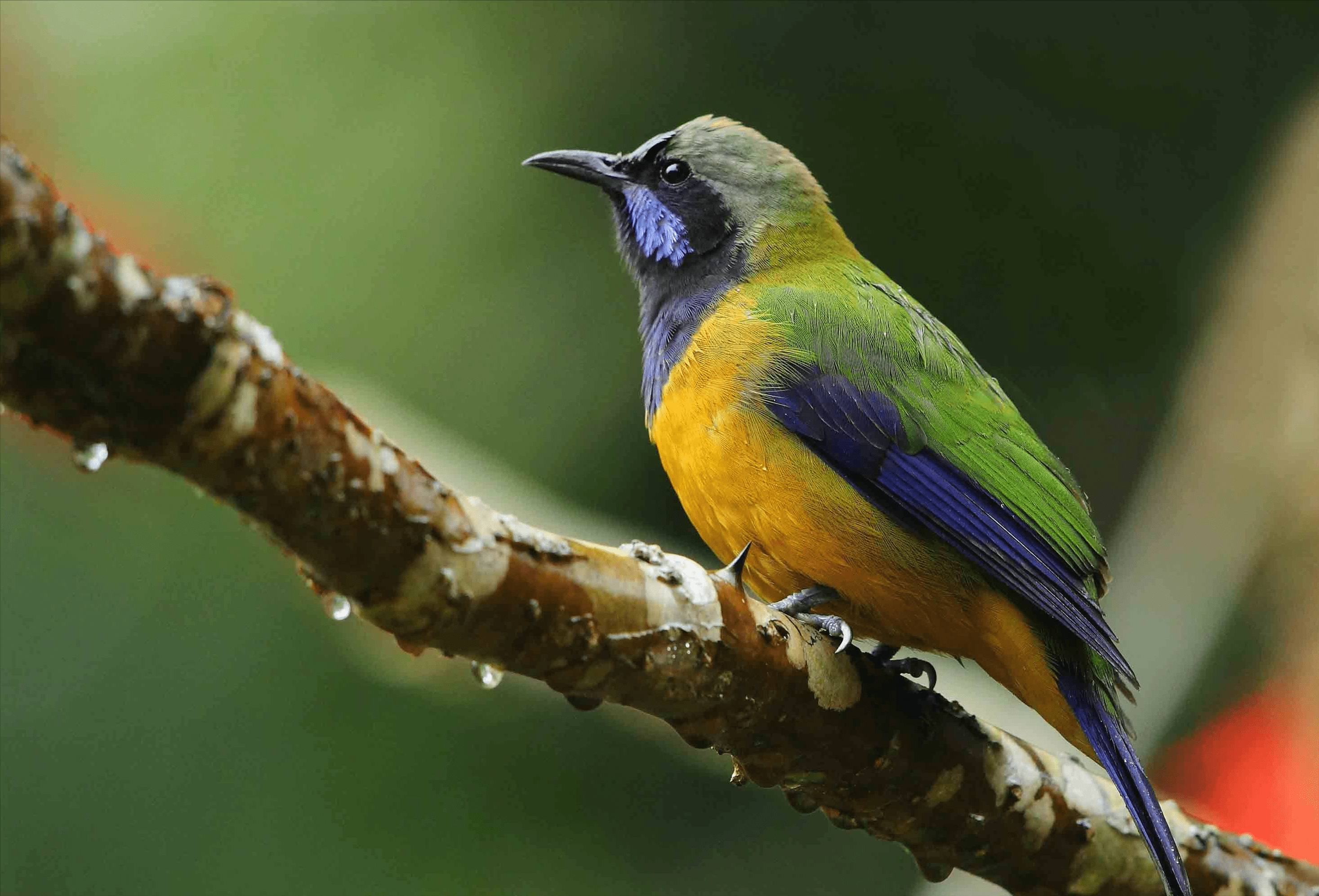
Orange-bellied Bulbul
The orange-bellied bulbul has yellowish-green from its forehead to the back of its neck, and the rest of its upper body is green. Its small coverts are bright cobalt blue, forming obvious shoulder spots. The chin, throat, and upper chest are black with cobalt blue moustache, and the rest of the lower body is orange. The flight feathers and tail feathers of the male bird are black and the female bird is green.

Blue-winged Bulbul
The Blue-winged Bulbul has a yellow forehead, blue wing coverts and flight feathers, and an orange belly.
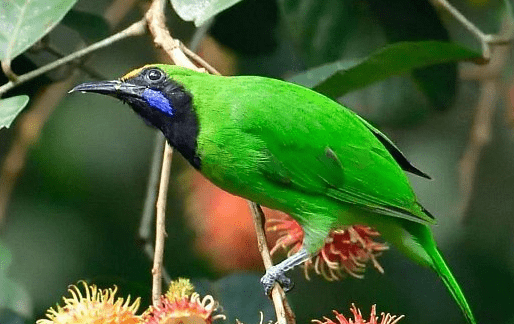
Amount of Leaf Bulbul
The forehead of the bulbul is orange, and the entire upper body, including the surface of both wings, is grass green. The chin and throat are black, with a yellow ring around them, the rest of the lower body is light green, the wing edges are blue-purple, and the small coverts on the wings are emerald blue. The characteristics in the wild are very obvious and easy to identify.
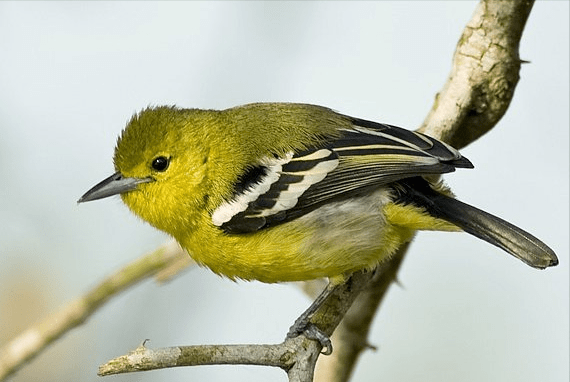
Black-winged Bulbul
The underparts of the black-winged bulbul are yellow. The bird has a straight beak, long and pointed wings, and the overall feathers are a combination of green and yellow. There are two obvious almost white horizontal stripes on the wings. The wings are almost black and the feather edges are white.
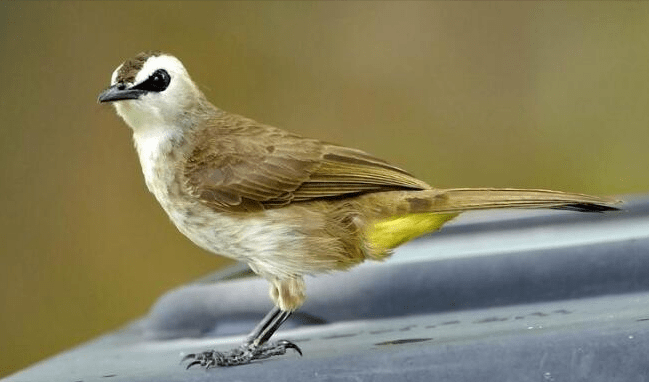
White-browed and yellow-rumped Bulbul
The White-browed and Yellow-rumped Bulbul was first discovered in Mengla County, Xishuangbanna Dai Autonomous Prefecture, Yunnan Province in 2019.
Thrush:
Birds in the thrush family are mainly small and medium-sized songbirds, with a total of 953 species, of which there are about 80 species in China. It is composed of thrush, 鶖[bī], robin, etc. There are certain differences in body shape and lifestyle. They mostly live on the ground and are good at running, but they are also good at flying, arboreal, and singing. Common thrushes: Gray-backed Thrush, Sooty-grey Thrush, Blackbird, White-bellied Thrush, Purple Whistling Thrush, White-throated Sandthrush, Tiger-spotted Ground Thrush, Bare-backed Ground Thrush, Long-tailed Ground Thrush, Spotted Thrush, Orange-headed Ground Thrush, Chestnut Thrush Belly Sandbird, Blue Sandbird, Gray-winged Thrush, Black-breasted Thrush, etc.
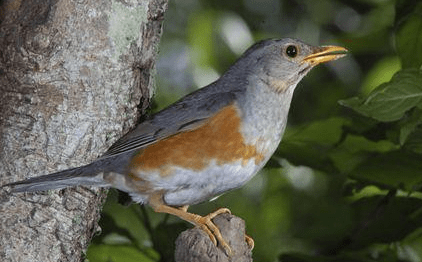
merlin
The upper body of the male Gray-backed Thrush is slate gray from head to tail, including the surface of both wings. The head is slightly olive-colored, and the sides of the head are decorated with orange-brown. The eyes are black at first, and the ear feathers are brown with fine white feathers.
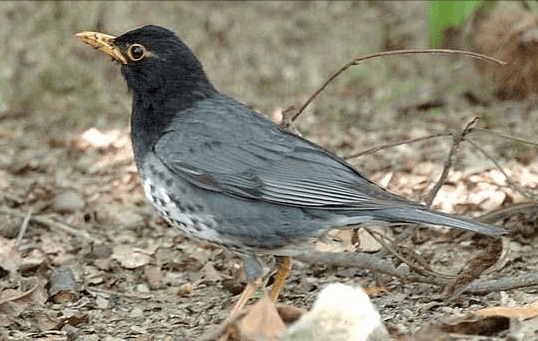
sooty thrush
The entire head, neck, upper body, chin, throat and chest of the sooty gray thrush are black. The rest of the lower body is white, with black spots on the upper abdomen and flanks. The upper body of the female bird is olive, the chin and throat are gray-white with brown spots, and the brown spots on both sides are connected in a line; the breast is gray with dark brown spots, and the sides of the chest and flanks, as well as the underwing coverts and axillary feathers are orange-brown. Very eye-catching when flying.

Blackbird (white-tongued, regurgitated, Chinese blackbird, blackbird, blackbird)
Blackbirds Male blackbirds are all black except for the yellow eyes and beak. Females and newborn blackbirds do not have yellow eyes, but have brown feathers and beaks.
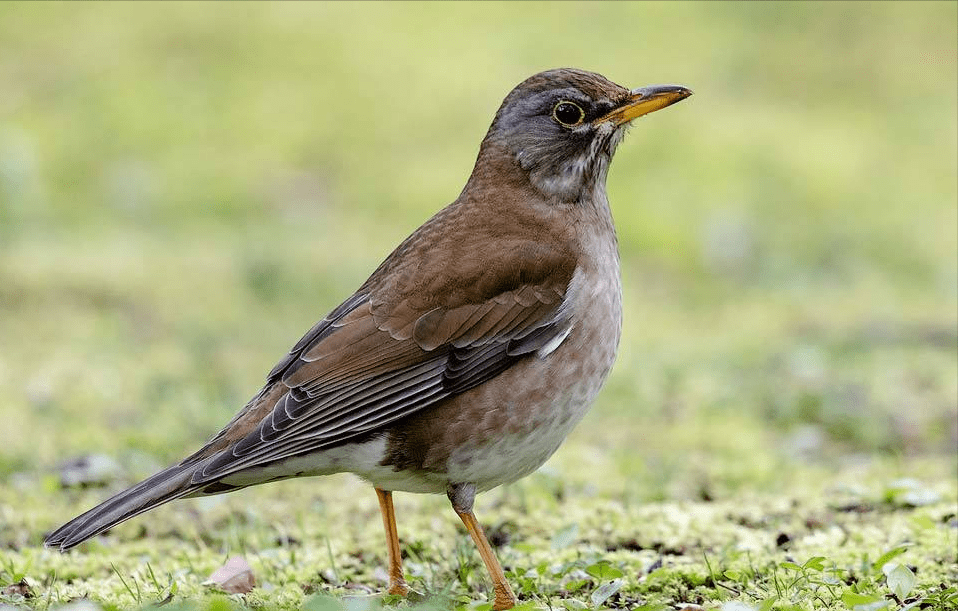
White-bellied Thrush
The white-bellied thrush has a gray-brown head with no eyebrow lines, an olive-brown back, a black-brown tail stained with gray, and broad white terminal spots on the outer tail feathers. The chin is white, the throat is gray, the chest and flanks are grayish brown, and the rest of the lower body is white with gray.
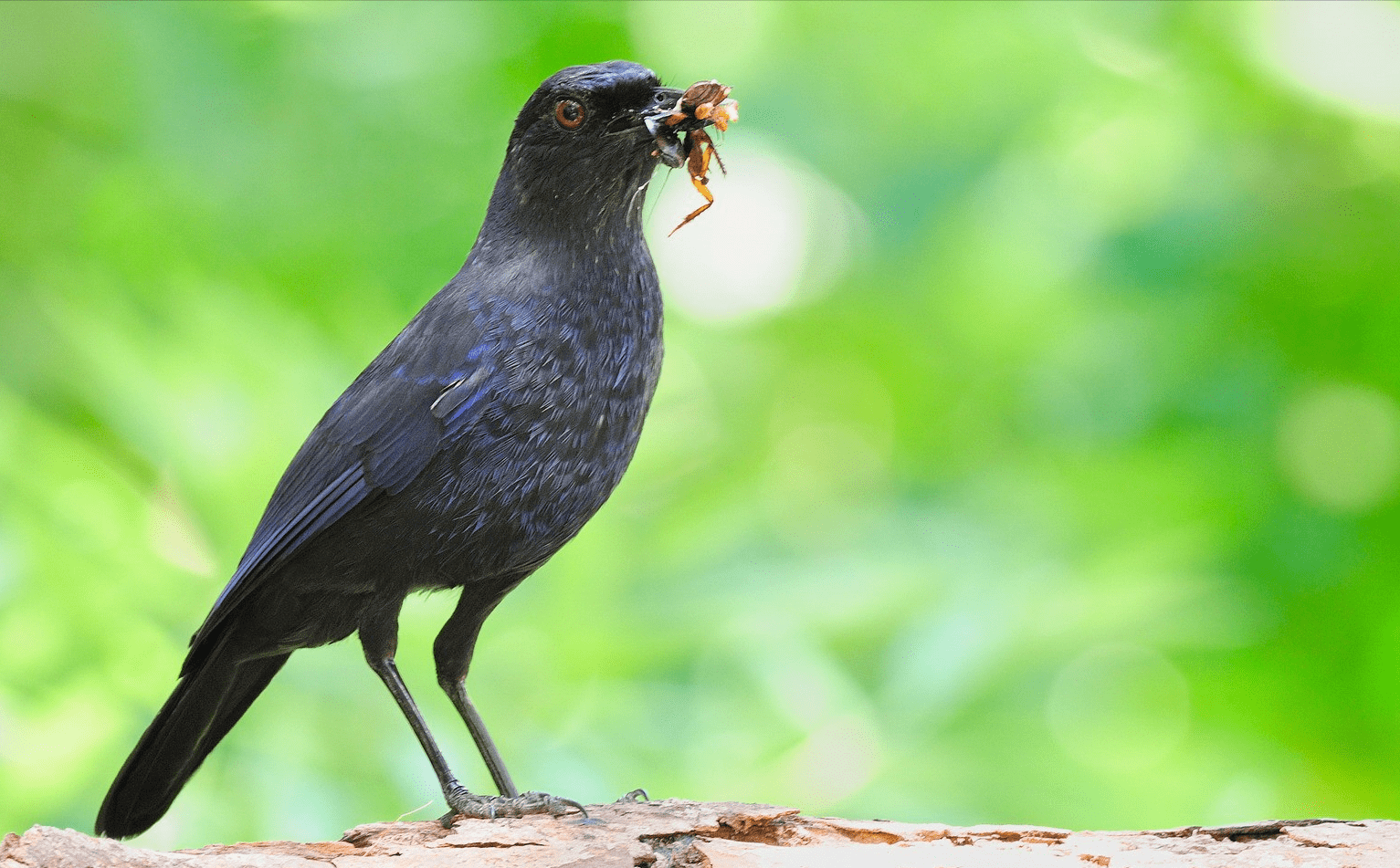
Purple whistling thrush
The male and female purple whistling thrushes have similar plumage colors. The base of the forehead and eyes are black first, and the rest of the head and the entire upper and lower body feathers are dark purple-blue. The ends of each feather have bright lavender drop-shaped spots. The drop-shaped spots are smaller on the top of the head and the back of the neck, and on the shoulders and back. Larger, the drop-shaped spots on the waist and tail coverts are smaller and sparse.

white-throated sandbird
The male White-throated Sandthrush has cobalt blue feathers on its head and wings, black back, wings and tail with white wing spots, maroon waist and underparts, and white throat. The upper body of the female bird is olive brown with black scaly spots, the wings and tail are grayish brown, the top of the head is grayish brown, the throat is white, and the rest of the lower body is brownish white with black scaly spots. The characteristics are very obvious and are not difficult to identify in the wild.
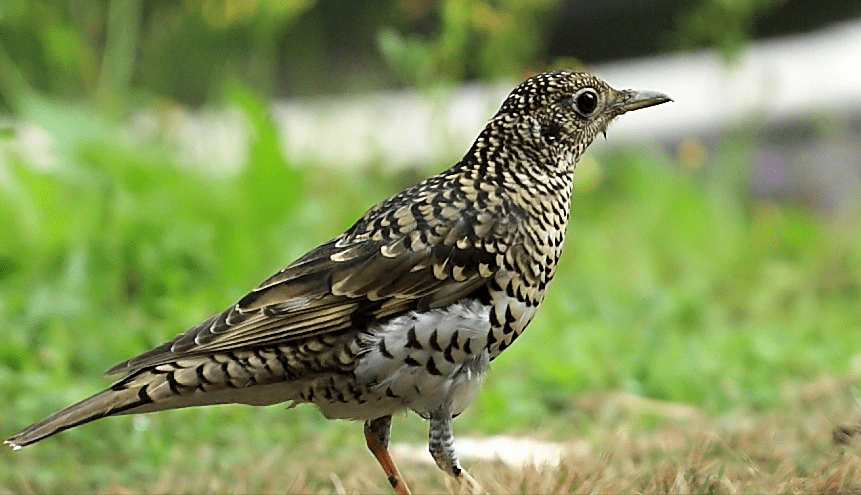
tiger ground thrush
The tiger-spotted ground thrush is the largest species of thrush, with a body length of up to 30 cm and a wing length of over 15 cm. The upper body is golden olive brown covered with black scaly spots. The lower body is light brown and white, with black scaly spots in addition to the chin, throat and middle part of the abdomen. The appearance and plumage color of the bare-backed ground thrush and long-tailed ground thrush are very similar to this species, but they are significantly smaller than this species, have no dark markings on their upper bodies, and lack golden color.

bare-backed groundbird
The upper body of the bare-backed ground thrush is dark olive brown with brownish red, and the lower body is light brown or white with dark scaly spots. The iris is brown, the mouth is dark brown, and the legs are bright yellowish brown.
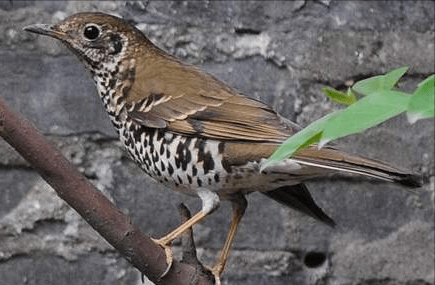
long-tailed ground thrush
The long-tailed ground thrush has an olive-brown upper body, light brown lower body with dark brown end spots, and scaly spots on the lower body. There are two yellow stripes on the wings and black spots on the ears. The iris is brown, the corners of the mouth are brown or black, the base of the lower mouth is lighter, and the foot flesh is yellow or bright yellow-brown.
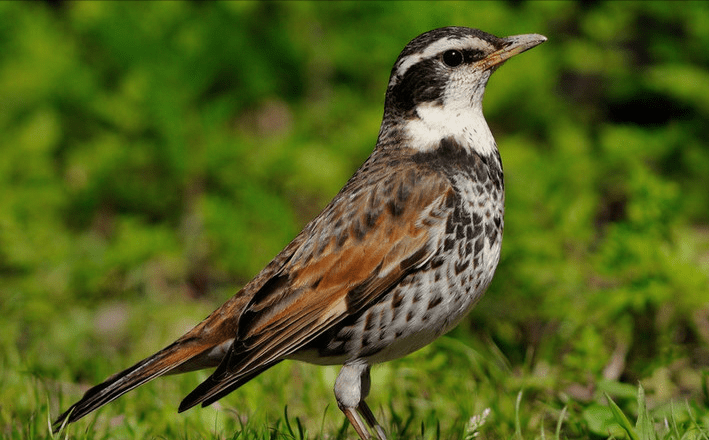
spotted thrush
The feather color of spotted thrush varies greatly. The upper body is dark olive brown mixed with black from head to tail; the lower body is white, with black spots on the throat, neck side, flanks and chest, sometimes densely forming a horizontal band on the chest; the wings and tail are dark brown. , the upper wing coverts and inner flight feathers have wide brown feather edges; the eyebrow lines are white, and the underwing coverts and axillary feathers are bright brown.

Orange-headed Ground Thrush
The entire head, neck and underparts of the Orange-headed Ground Thrush are orange and maroon. The rest of the upper parts include the wings and tail, which are blue-gray or olive-gray, with many white wing spots on the wings.

Chestnut-bellied Sandbird
The male Chestnut-bellied Sandthrush has bright cobalt blue upperparts, dark brown wings, blue-black throat, and chestnut red underparts. The upper body of the female bird is olive brown, with black scaly spots on the back, and the lower body is brown and white densely mixed with dark brown horizontal spots. The contrast between black and white is extremely eye-catching and has obvious characteristics, making it easy to identify in the wild.
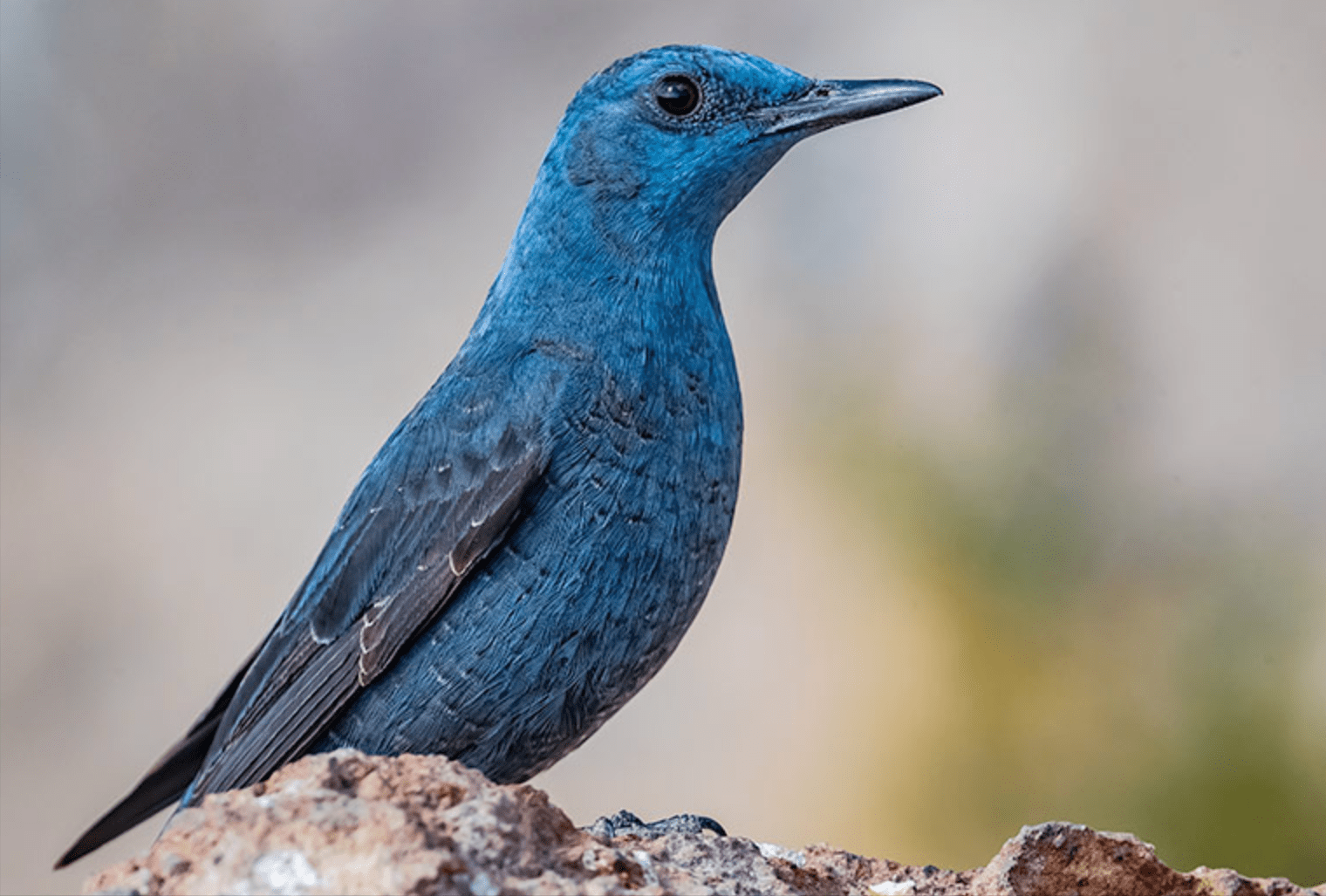
Blue Sandbird
The Blue Sandbird is a medium-sized bluestone gray sandbird. The upper body of the male bird is almost pure blue, the wings and tail are almost black; the front of the male bird is blue and the back is chestnut red. The upper body of the female bird is blue-gray, and the wings and tail are also black; the lower body is brown and white, and each feather is decorated with black wavy spots.
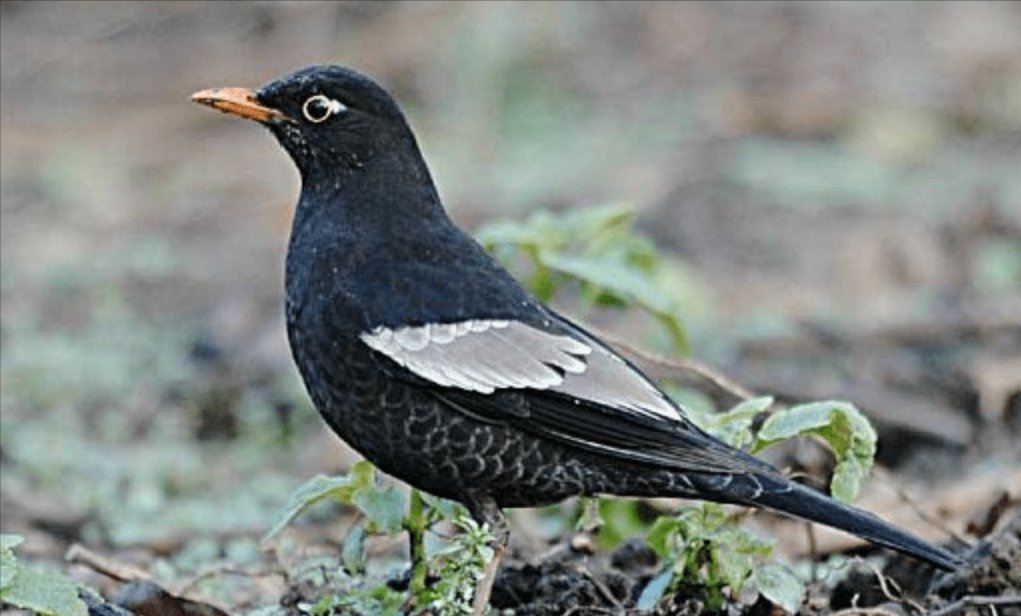
Grey-winged Thrush - male bird
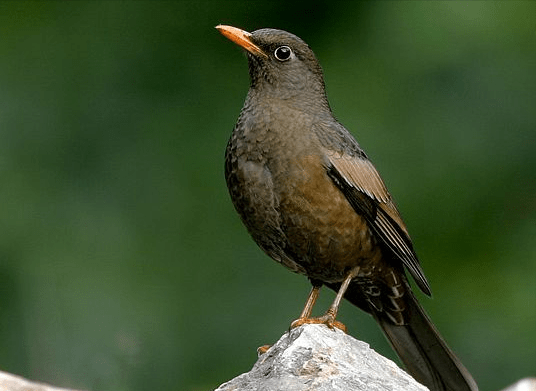
Grey-winged Thrush - female bird
The gray-winged thrush male is completely black with large and obvious light gray wing spots on its wings, which is extremely eye-catching against the black body feathers. The feathers from the abdomen to the lower part of the tail have silver-gray feather edges, forming obvious silver-gray scaly spots. The mouth is orange-yellow and the eyes are yellow. The female bird is olive brown all over with light reddish brown wing spots, and the bill is also yellow. The characteristics are very obvious and are not difficult to identify in the wild.

Black-breasted Thrush
The male black-breasted thrush has a black head, neck and chest, with the rest of its upper body dark gray and its lower body orange-brown, which is extremely eye-catching. Mouth and feet are waxy yellow. The female bird has an olive-brown upper body, a white chin and throat, and an olive-brown upper breast with black spots. The rest is similar to the male bird.
Birds: Common robins: Eurasian robin, Japanese songbird, red-tailed songbird, Xinjiang songbird, red-spotted songbird (red-throated songbird), black-breasted songbird, blue-throated songbird [blue-spotted songbird], Red-sided Bluebird, Golden Woodbird, White-browed Woodbird, Brown-bellied Woodbird, Taiwanese Woodbird, Magpie Robin, White-rumped Magpie Robin, Helan Mountain Redstart, Red-backed Redstart, Blue-headed Redstart, Ocher Tail robin, Eurasian redstart, northern redstart, red-bellied redstart, blue-fronted redstart, white-capped brook robin, red-tailed water robin, white-bellied short-winged robin, white-tailed bluebird, blue great-winged robin, etc.
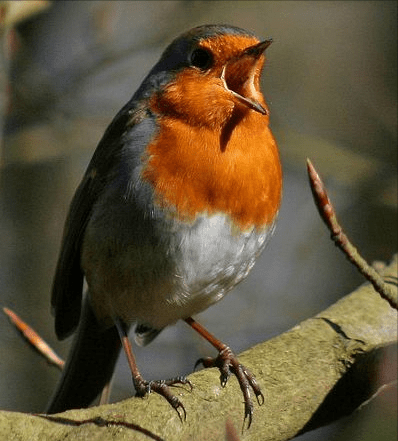
Eurasian robin -- robin, red-breasted bird
The Eurasian robin, commonly known as the robin, is a small songbird. The body is about 14 centimeters long, with red breast feathers, a black head and bright eyes.
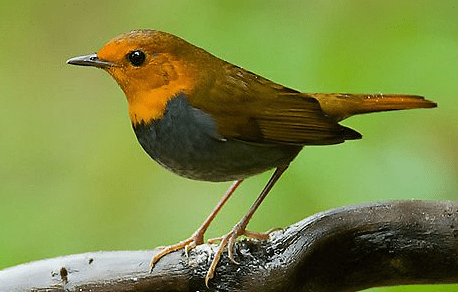
Japanese songbird
The Japanese songbird is as small as a sparrow, but its feathers are more beautiful in color. The beak is slender and the beak is underdeveloped; the wings are short and round, and the grass on the upper body is yellow-brown. The throat of the male bird is very obvious, while the throat of the female bird turns to light orange-yellow.
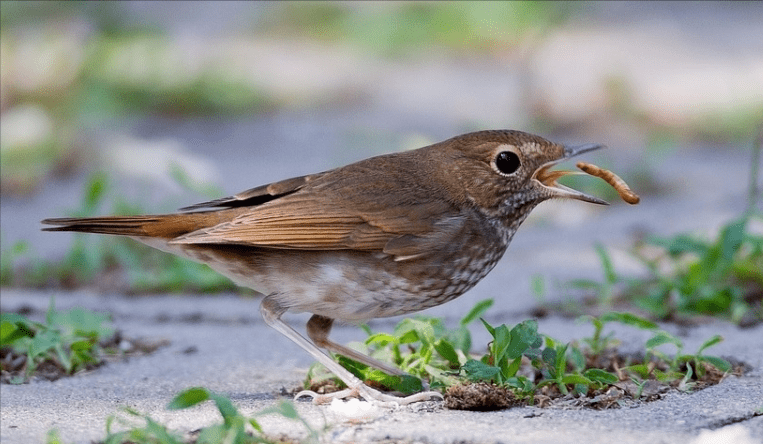
red-tailed songbird
The male red-tailed songbird has dark brown or olive brown forehead and head, light yellowish brown or yellowish white around the eyes, light dark brown or yellowish brown in front of the eyes, olive brown ear feathers mixed with fine yellowish brown feather shaft lines. The nape, back, shoulders, waist and other upper parts of the body are olive brown, and a few individuals are light brown. The upper tail coverts are brown, and the tail feathers are chestnut red or brown.
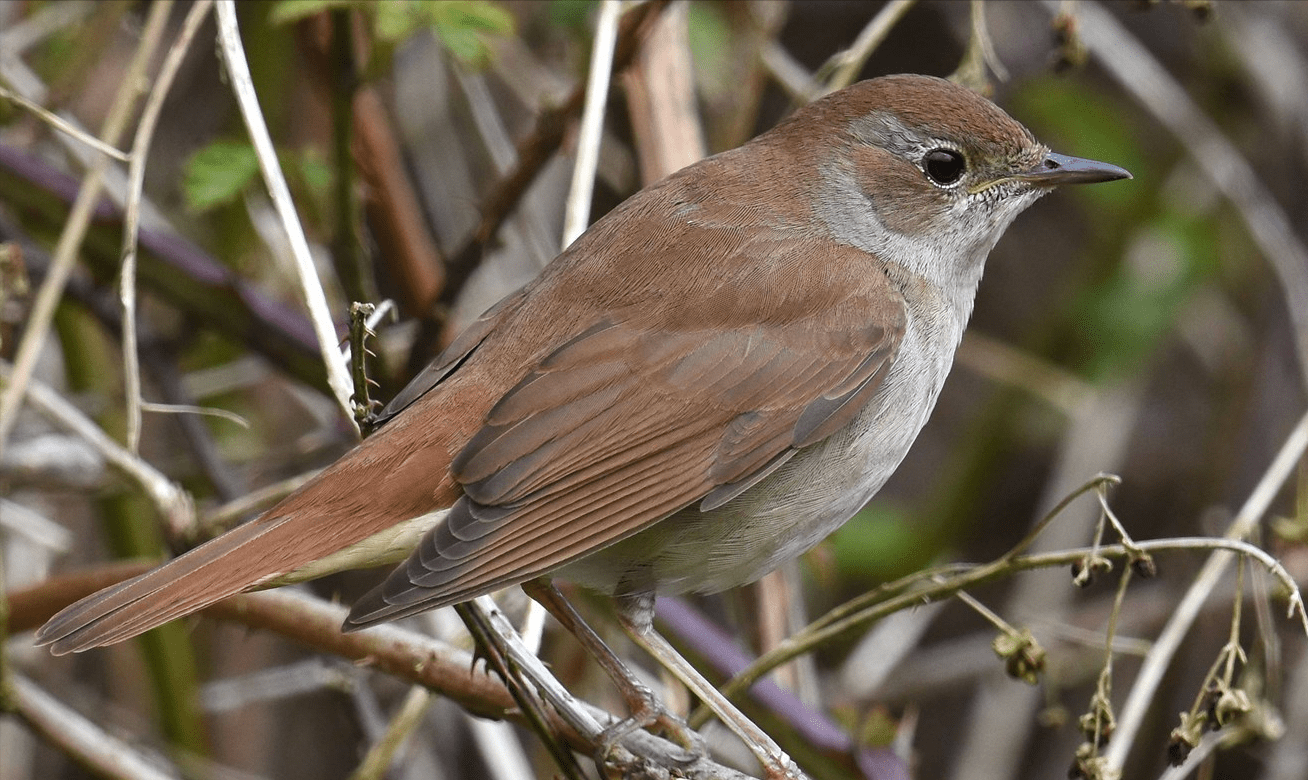
Xinjiang songbird
The tail of the Xinjiang song robin is longer than that of other robins. The upper body, including the wings and tail, is brown, and the lower body is dirty white or has yellow-white skin without markings. The eyes are dark white at first. Because it is only found in Xinjiang in China, it is named "Xinjiang Songbird".
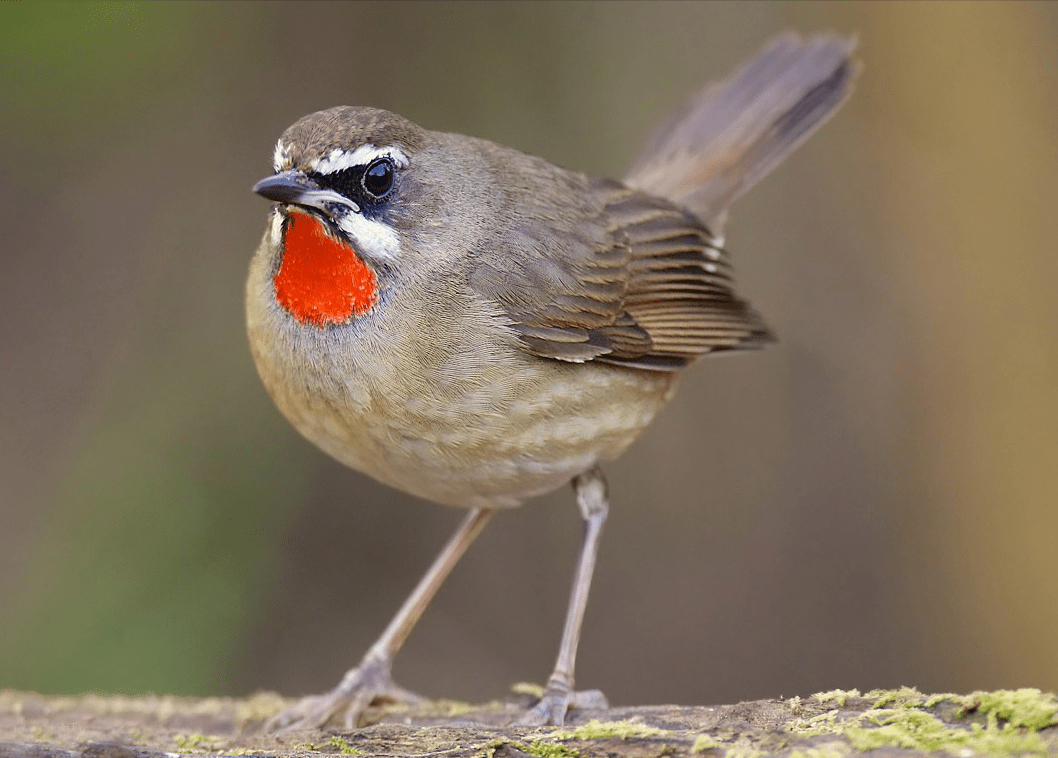
Red-spotted Chin - Red-throated Songbird
The red-spotted chin is also known as the Siberian songbird. The male's head and upper body are mainly olive brown. Eyebrow lines are white. The chin and throat are red with black narrow stripes around them. The chest is gray and the belly is white. The chin and throat of the female bird are not red, but white.
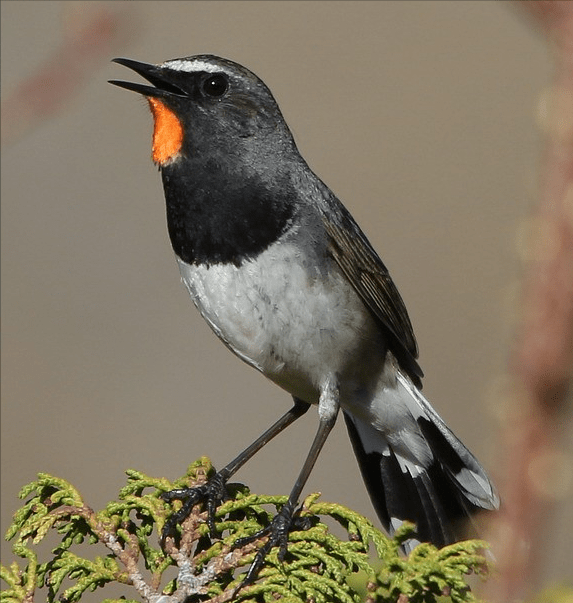
black-breasted songbird
The upper body of the black-breasted songbird is slate gray-brown or olive-brown, the head and sides of the neck are black, and the eyebrow lines and zygomatic lines are white, which is very eye-catching on the dark head. The wings and tail are dark brown, and the outer tail feathers have white terminal spots. The male bird's chin and throat are dark red, while the female bird's lower body is white. The chest is black and the belly is white. The characteristics are obvious and easy to identify in the wild.

Blue-spotted Chin - Blue-throated Songbird
The blue-spotted chin is also known as the "blue-throated songbird" and is commonly known as the indigo chin. The body size is similar to that of a sparrow, and the head and upper body are mainly earthy brown. Eyebrow lines are white. The tail feathers are dark brown and the base is chestnut red. The chin and throat are bright blue, with black horizontal stripes underneath. Underparts white. The female bird is similar to the male bird, but the chin and throat are brown and white. Iris dark brown. The mouth is black. Leg flesh brown. The sound is very nice
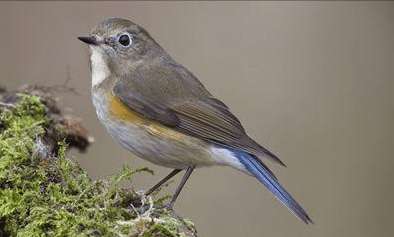
Red-sided Bluestart
Common names of red-sided blue-tailed robin: blue-spotted robin, blue-tailed robin, blue-tailed jay, and blue-tailed robin. A slightly smaller robin with a white throat. It is characterized by orange flanks contrasting with white belly and buttocks. The male bird has blue upper body and white eyebrow lines; the adult bird and female bird are brown and have blue tail.
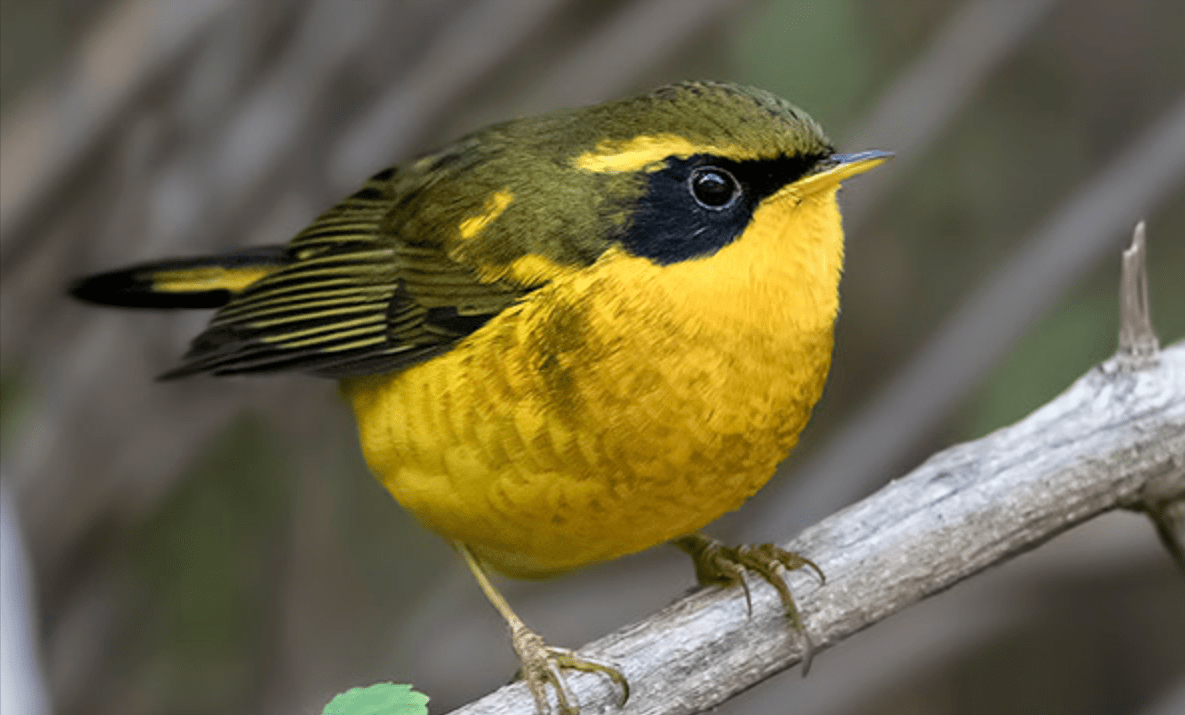
golden woodbird
The golden woodbird is yellow-olive green from the head to the back, the front of the eyes and the sides of the head are dark brown, and the eyebrow lines are golden-orange. The small coverts on the shoulders and wings, the upper coverts on the waist and tail, and the entire lower body are generally golden-orange, and the two wings are black. The central tail feathers are black, and the outer tail feathers are orange-yellow with black end spots. The characteristics are very obvious and are not difficult to identify in the wild.
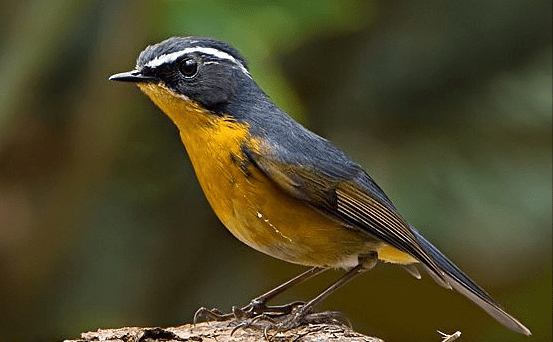
White-browed Wood Robin
The male White-browed Wood Robin has gray-blue upperparts with long and prominent white eyebrow lines, and orange-brown or olive-yellow underparts. The female bird has olive-brown upperparts with prominent white eyebrow lines, and light yellowish-brown lowerparts.

Brown-bellied woodbird
The brown-bellied woodbird resembles the red-flanked bluebird and is a small (14 cm) dark blue and orange woodbird. It is listed in the second level of "China's National Key Protected Wild Animals List".

Taiwanese wood robin -- female
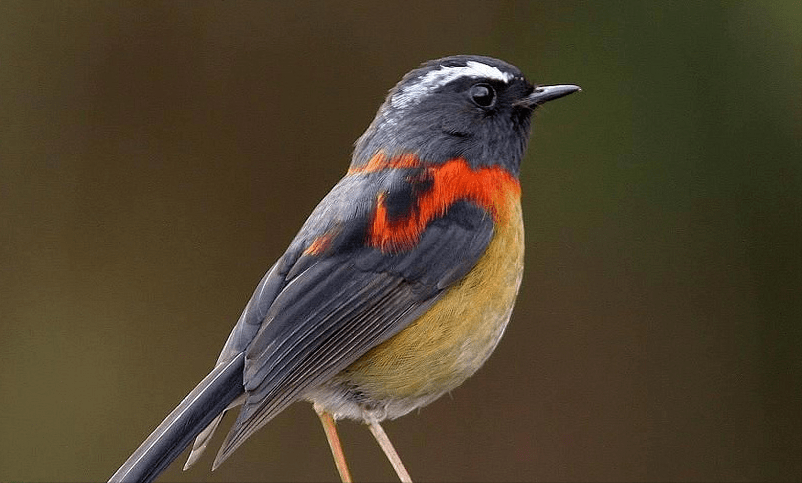
Taiwan Lin Yu -- male
The male Taiwanese woodbird is also known as chestnut-backed woodbird, Alishan woodbird, and collared woodbird. The bird's head and throat are black, and a broad white eyebrow line is very eye-catching on the black head. Back and shoulders black. There is an orange-red broad band on the chest, extending to the back neck and shoulders on both sides. The lower chest and two flanks are olive brown, and the rest of the lower body is white. The female is dark olive brown with white but inconspicuous eyebrow lines. The underparts are yellow-olive. The characteristics are very obvious, especially the male bird, and it is not difficult to identify it in the wild.
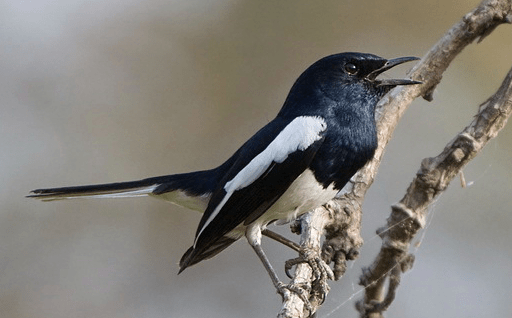
Magpie robin -- Si Xi'er
The beak of the magpie robin is thick, strong and straight, and its length is about half the length of the head or slightly longer than half; the tail is convex, and the tail is almost the same length as the wings or slightly longer than the wings. The magpie robin has a lively and active personality and often forages for food. Wagging its tail, it does not matter whether it is dawn or dusk in all seasons. When it is happy, it will sing on tree branches or on the exterior walls of buildings. Therefore, it is known as the "Four Happy Children" in mainland China.
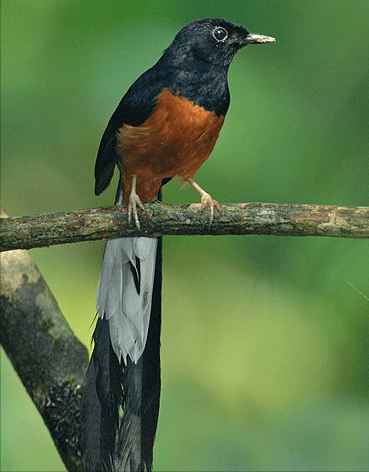
white-rumped magpie robin
The entire head, neck, back and chest of the white-rumped magpie robin are black with blue metallic luster, and the feathers on the waist and tail are white. The tail is long, about twice as long as the body, and the outer tail feathers have wide white end spots. Chestnut yellow or brown below the chest.
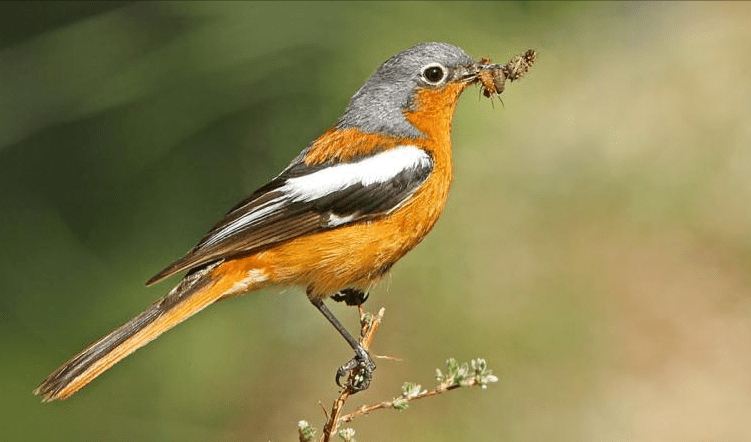
Helan Mountain Redstart
The head, nape, head side and upper back of Helan Mountain Redstart are blue-grey; the lower back and tail are orange-brown, only the central tail feathers are brown; the chin, throat and breast are orange-brown, and the belly is orange-yellow to almost white; the wings are brown with white patches; It is very similar to the red-backed redstart, but the head, sides of the head and nape are blue-gray. Female bird: heavier brown, darker upper body; gray lower body instead of brown;

red-backed redstart
The red-backed redstart is gray or light blue-gray from the forehead, the top of the head to the back of the neck. The upper feathers on the back, waist and tail and the lower body are brown or rusty red. The wings are dark brown. There are large white spots on the wings that are very eye-catching. The eyes and below the eyes are very eye-catching. There is a large black spot on the cheek, which extends backward through the ear feathers and the side of the neck to the end of the wings. The characteristics are very obvious and are not difficult to identify in the wild.
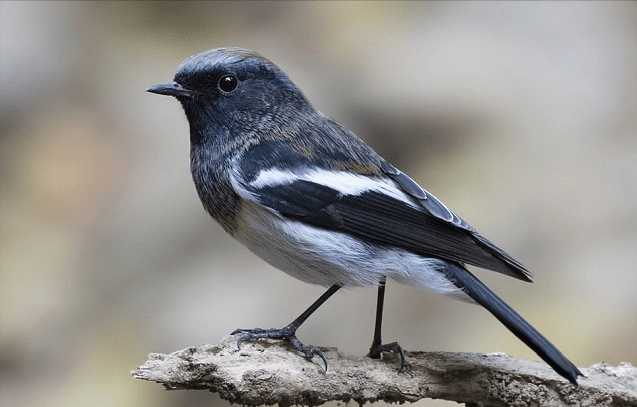
blue-headed redstart
The blue-headed redstart is blue-grey from the head to the occiput, the rest of the upper body is black, the wings are dark brown, and there are obvious self-spots on the wings. The chin, throat and chest of the lower body are black, and the rest of the lower body is white. The upper body of the female bird is grey-brown stained with green, the waist and tail coverts are maroon, the tail is dark brown, the lower body is grey-brown, and the belly is yellow-white.

ocher redstart
The forehead, head side, neck side, chin to chest are black, the head and back are gray or black, the waist, upper tail coverts, lower tail coverts, outer tail feathers and belly are chestnut brown, the central tail feathers are brown, and the two wings are black brown.
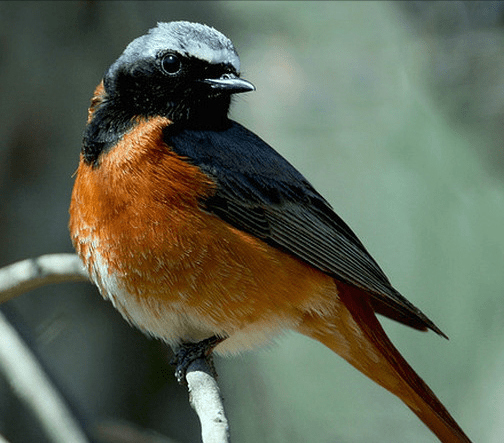
Eurasian redstart
Eurasian Redstart A richly colored redstart. Male bird: The forehead and eyebrow lines are white, and the gray on the top of the head, nape and upper back is separated from the black eyes, face and throat. Wings brown without white spots. The chest, waist and outer tail feathers are brown, and the central tail feathers are dark brown. The skin of the abdomen and lower tail coverts is yellow. It is characterized by white rump and no white spots on the wings. The female bird is brown, with brown waist and outer tail feathers; yellow skin before the eyes, eye rims, abdomen and under tail coverts.

northern redstart
The Northern Redstart is slate gray from the top of its head to its straight back, its lower back and wings are black with obvious white wing spots, its waist and tail upper coverts and tail are orange-brown, and the central pair of tail feathers and the outermost pair of tail feathers are black. The base of the forehead, the side of the head, the side of the neck, the chin, throat and upper chest are generally black, and the rest of the lower body is orange-brown. The female bird has an olive-brown upper body, dark brown wings with white spots, slightly white eye circles, and dark yellow-brown lower body.

Redstart
The redstart is slightly larger than other redstarts. The male bird's head to pillow is white, and its forehead, sides of its head, back, shoulders, wings, chin, throat and chest are black. There are large white spots on the wings, which are very eye-catching against the black wings and back. The rest of the upper and lower body feathers, including the tail, are black. The upper and lower tail coverts are generally rusty brown. The female bird is smoky gray-brown, with brown waist to tail coverts and tail feathers, and a white ring around the eye. The underparts are light brownish gray. The characteristics are very distinctive and are not difficult to identify in the wild.
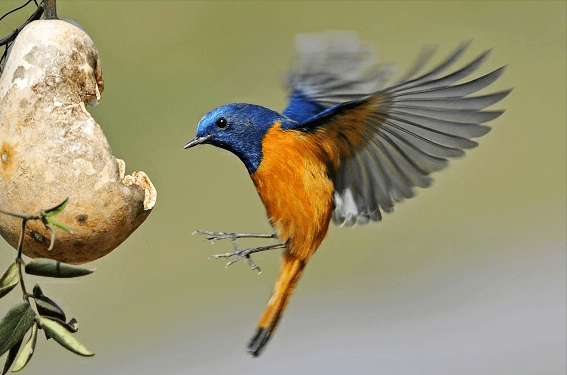
blue-fronted redstart
The summer feathers of the male Blue-fronted Redstart have bright blue forehead and short eyebrow lines, the top of the head, the sides of the head, the back of the neck, the sides of the neck, the back, shoulders, the small and middle coverts of both wings, as well as the chin, throat and upper chest. Generally black with blue metallic luster.

white-capped brook robin
White-capped brook robins are black and chestnut brook robins. The top of the head and the nape of the neck are white, and the waist, tail base and abdomen are maroon. It is characterized by always standing in the water or on protruding rocks near the water, nodding its head constantly when landing and its tail with black feather tips keeps twitching.
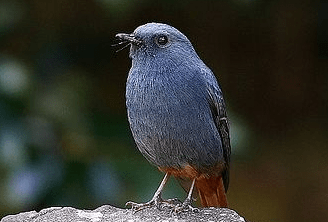
red-tailed water robin
The body of the red-tailed water robin is mostly dark gray-blue; its wings are dark brown; its tail feathers and upper and lower tail coverts are chestnut red. The upper body of the female bird is grey-brown; the wings are brown with two white dots; the tail feathers are white with brown ends and feather edges; the upper and lower tail coverts are pure white; the lower body is gray with irregular white spots. It is active in mountain springs and streams or among rocks on the banks of mountain streams, river valleys, plain rivers, around buildings near streams, or among pond banks.
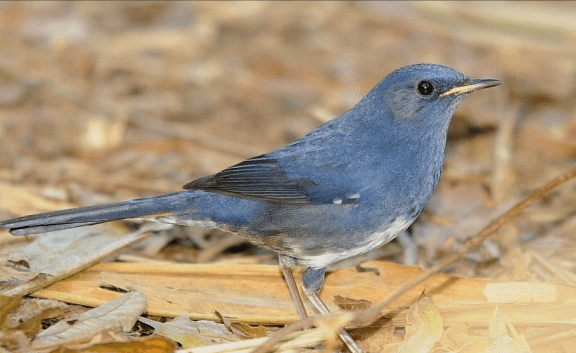
white-bellied robin
The white-bellied robin has short wings and a long, convex tail. The entire head, neck, chest and upper body of the male bird are dark lead blue-grey, the tail feathers are blue-black, the base of the outer tail feathers is maroon, and the belly is white. The upper body of the female bird is dark olive brown, the waist to the upper tail coverts and tail feathers are slightly brown, the chin, throat and middle part of the abdomen of the lower body are milky white, and the rest of the lower body is light yellowish brown.

white-tailed blue robin
The male white-tailed blue ground robin is blue-black all over, with cobalt blue on the forehead, eyebrow lines and shoulders. White spots are vaguely visible on both sides of the lower neck. Except for a pair of tail feathers in the center and outer sides, the bases of the rest of the tail feathers are white, and the tail is black. A white spot is formed on the left and right sides, which is extremely eye-catching. The female bird is olive brown all over, with darker upper body, dark brown wings with light brown feather edges, yellow skin around the eyes, light grayish white in the middle of the abdomen, and white spots on the tail.
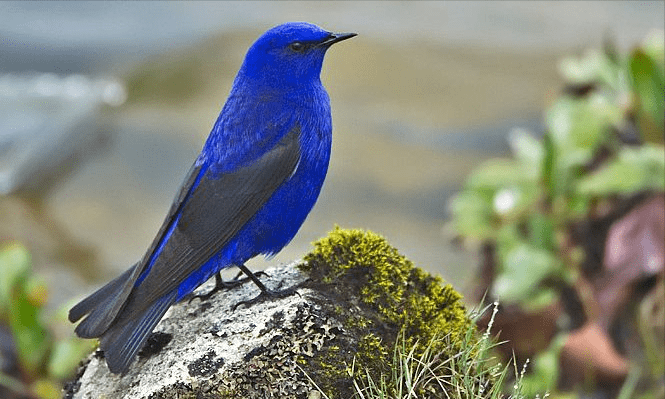
blue robin
The blue robin is an alpine bird. The wings have long tips. The male bird is bright purple-blue with a metallic luster. The wings and tail are black. The upper body of the female bird is grey-brown, with brown-white vertical stripes on the head, neck and quill, and white wing spots on the wings. The iris is dark brown, and the mouth and feet are black.
Category [bī]: The common ones [bī]: black-throated catfish, dipthroated catfish, white-spotted black catfish, gray forest catfish, black-and-white forest catfish, sand catfish, desert catfish, white-crested catfish, oriental spotted catfish, and panicle Shao et al.
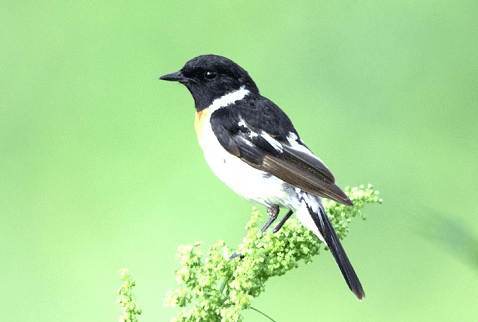
black-throated stonefish
The black-throated stone turtle is a medium-sized black, white and russet stone turtle. The male bird has black head, throat and flight feathers, thick white spots on the neck and wings, white waist and brown breast. The female bird is darker than black, with a light white throat.
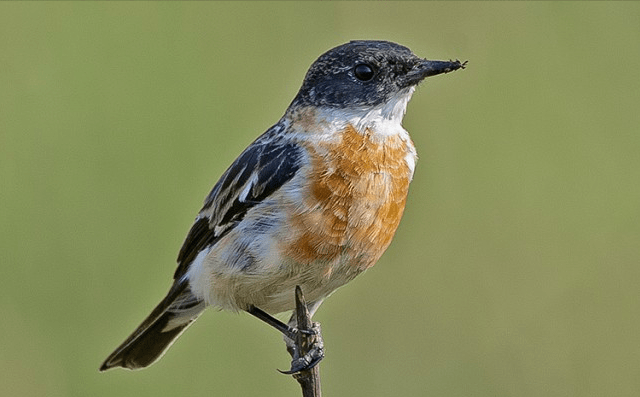
diphtheria stonefish
The male bird has black upperparts with large white wing spots, white upper tail coverts, white chin and throat, and rusty red underparts. The female has grayish-brown upperparts, two broad brown horizontal spots on the wings, rusty brown lowerparts, and darker throat and breast.
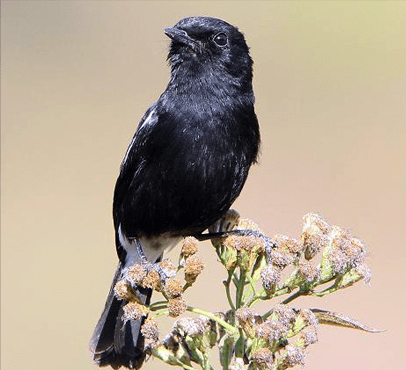
White-spotted black stone turtle
The white-spotted black stone turtle is a small black and white turtle. The male bird is completely black, with only the eye-catching wing stripes and waist being white.
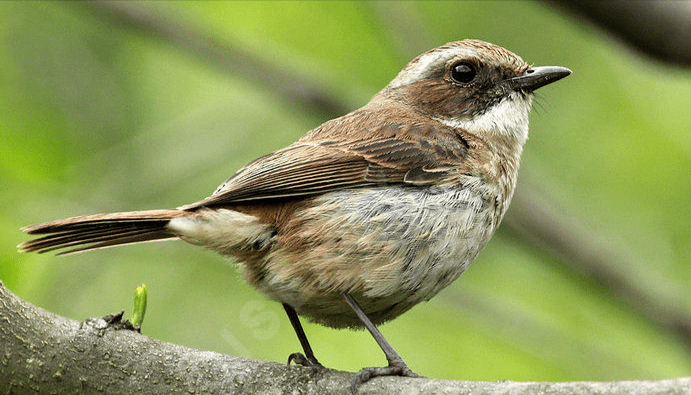
gray forest buzzard
Gray Woodchas are small birds. The upper body of the male bird is dark gray with dark brown vertical stripes, the white eyebrow lines are long and prominent, the wings are dark brown with white markings, the lower body is white, and the chest and flanks are smoky gray. The upper body of the female bird is reddish-brown with slight black vertical stripes, the lower body is white on the chin and throat, and the rest of the lower body is brown and white.

black and white lin lin
Black and white woodland male: body length 15 cm. The upper body is completely black and the lower body is white. Female bird: brown upper body, brown waist, white throat, rest of lower body light brown, chest and flanks darker. The eyebrow pattern is much shorter and less obvious than that of the female gray woodbird, and the tail is longer and rounder. Iris brown; mouth black; feet black.
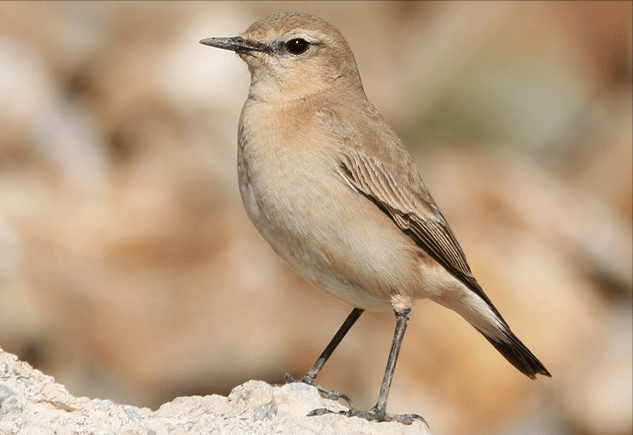
Shajia
The upper body of the sand turtle is sandy brown with white eyebrow lines, the waist and upper tail coverts are white, the tail is black, and the base of the outer tail feathers is white. The lower body is sandy gray brown, and the chest is slightly rusty. Iris dark brown. Mouth and feet black.

desert
The desert male bird has a sandy brown upper body, white waist and tail coverts, black wings and tail, white tail base, white eye stripes, black entire face and head side below the eyebrow lines, as well as the chin and throat, and the rest of the underparts are white. The female bird is roughly similar to the male bird, but the chin and throat are white, and the face and side of the head are not black but dark brown. The characteristics are obvious and easy to identify in the wild.

Baidingjiao
The white-capped male bird has white from the top of its head to the back of its neck, black on the sides of its head, back, wings, chin and throat. The rest of its body feathers are white. The central pair of tail feathers are black, the base is white, and the outer tail feathers are white with black end spots. The upper body of the female bird is earthy brown. The waist and tail coverts are white. The tail is white with black end spots, the chin and throat are brown or black, and the rest of the lower body is yellow. The characteristics are obvious and easy to identify in the wild.

Oriental spotted turtle
The male Oriental spotted hawk is black and white. Except for the waist, abdomen, upper and lower tail coverts, which are white, the rest are all black. The central tail feathers are black, the base is white, and the outer tail feathers are white with black end spots. The characteristics are very obvious and easy to identify. Especially its black head, back, chest, abdomen and other lower parts are all black.
Flycatchers:
There are about 1,400 species in the Flycatcher family. They fly dexterously and mostly hunt insects in the air. They are the most diverse passerine birds. Crows, thrushes, warblers, noisy babblers and even the thrushes above are all classified into the family Flycatcher in some places. Here, only some representative birds are introduced: Copper-blue Flycatcher, Blue Fairy Flycatcher, Fairy Flycatcher, and Fairy Flycatcher , Leaf Warbler, Willow Warbler, Fantail, Wren, Reed Warbler, Ground Warbler, Tree Warbler, Great-tailed Warbler, White-cheeked Babbler
,
Black-fronted Mountain Babbler, Great Noisy Babbler, Spot-backed Babbler, Gray-bellied Babbler, White-spotted Babbler, Gray-breasted Babbler, White-crowned Babbler, White-crowned Babbler, Whiskered Pheasant, Sinian Crow, Thrush, etc.
Copper-blue Flycatcher
The copper-blue flycatcher is 13 to 16 centimeters long. The male bird is bright copper-blue all over, with black eyes and white terminal spots on the lower tail coverts. The female bird is roughly similar to the male bird, but not as brightly colored as the male bird, with gray-blue underparts and an almost gray-white chin.

Pure Blue Fairy Flycatcher
The Pure Blue Fairy Flycatcher is a slightly larger light blue or almost brown flycatcher. The upper body of the male bird is bright cobalt blue, the eyes are black at first, the throat and chest are light blue, the belly is gray and white, and the lower tail coverts are almost white. The upper body of the female bird is grey-brown, the tail is mostly brown, the lower body is grey-brown, the eye rims and eyes are yellow-brown, and sometimes there is a narrow dark green band on the base of the upper bill.

Chinese Fairy Flycatcher
The fairy flycatcher specifically refers to the Chinese fairy flycatcher, which is distributed in the southern and southwestern regions of my country. It is a bird of the genus Blue Fairy Flycatcher in the family Flycatcher. It is very beautiful.

Flycatcher
The robin flycatcher is an orange and black and white flycatcher. The upper body of the male bird is gray and black, with narrow white eyebrow lines behind the eyes; there are obvious white spots on the wings, and the feathers at the base of the tail are white; the throat, chest and ventral sides are orange; the center of the abdomen and the lower tail coverts are white. The upper body of the female bird includes a brown waist, and the lower body is similar to the male bird but is lighter in color and has no white tail. The upper body of the immature bird is all brown, the lower body and wing stripes are yellow, and the belly is white. The iris is dark brown, the mouth is dark horny, and the feet are dark brown with claws.
There are 13 species of warblers. The body is slender, the beak is pointed and slightly curved, and the tip of the upper beak is often notched; the wings are short and round; the tail is medium to long; the legs are short and thin. Feather colors are mainly gray, brown and olive green. The common warbler and the red-tailed warbler are common.

Common Leaf Warbler
The Common Leaf Warbler is a small warbler with a brown crown and a white belly. The tail is long and often raised; the forehead and front crown are brown, the eyes and the side of the head are nearly white, the back crown and the back of the neck are biased; the back, wings and tail are olive green, the lower body is white and the sides are gray.

Red-tailed Warbler
The head and tail of the red-tailed warbler are bright maroon, and the upper body and wings are black, which is in sharp contrast to the white underparts of the chest and abdomen. Has a relatively long tail that slopes slightly towards the tip.
The Willow Warbler, commonly known as Willow Chuan'er or Sophora Chuan'er, is the most common and abundant small insectivorous bird in my country. The willow warbler is the smallest songbird, and the blackbird is also known as the Mouse, and is the best at singing and learning to talk. There are many types of warblers, the three most common ones are the yellow-browed warbler, the yellow-rumped warbler and the far northern warbler.

Yellow-browed Warbler
The yellow-browed warbler is about 7 cm long and olive green. Its most obvious features are a light green eyebrow line and two white spots on its wings. It is active among the treetops and branches of willows, locust trees and other trees and shrubs, constantly jumping and pecking. Sexually unafraid of people, easily discovered.

Yellow-rumped Warbler
The Yellow-rumped Warbler is smaller than the Yellow-browed Warbler and often mingles with other Warblers in groups, jumping between branches to feed. The difference from the Yellow-browed Warbler is that there are no light yellow eyebrow lines, but there is an obvious yellow horizontal band on the waist.

Northern Orioles
The Northern Orioles are 11-13 centimeters long, small and grayish-olive in color, with obvious yellow-white long eyebrow lines, and the eyes before and after the eye lines are almost black. The upper body is generally gray olive green;

Fantail
The Fantail Warbler, also known as the Locust Warbler or the Little Locust Warbler, is a small bird of the genus Locust Warbler in the family Orbidae. Its upper body is orange-brown to olive brown with prominent dark brown markings; its lower body feathers are milky white without markings; its tail feathers have a prominent ventral mask. Proximal dark spot and pale white tip. The iris is dark brown; the mouth is dark brown, and the base of the lower mouth is yellowish brown; the legs are dark brown.

wren
The wren is mostly distributed in most areas of the sub-Saharan Africa. It has a long and convex tail like a wren, so it is also called the long-tailed warbler.

Great Reed Warbler
The reed warbler is a common insectivorous bird in reed ponds and swamp areas. It is mainly brown in color and has a thin pointed beak. It is slender and sexually active. It flies and jumps between grass stems in search of insects. The most common species in my country is the Great Reed Warbler, which is the largest among the warblers and is commonly known as the Great Reed Warbler, the Great Reed Warbler, and the Grasshopper.
Ground warblers are smaller than sparrows. The mouth is only half the length of the head; the base of the mouth is broad and the ends are flat; the beak is short; the tarsometatarsus is very long and strong; the wings are short and round; the tail is very short, less than 20mm; it is ground-dwelling.

Chestnut-headed Warbler
The underparts are bright yellow and the top of the head is chestnut red → Chestnut-headed Ground Warbler

golden-crowned ground warbler
The lower body is slate gray, and the top of the head is olive green and bright golden, which is different from the back → Golden-crowned Ground Warbler

Gray-bellied Warbler
The lower body is gray, the top of the head is dark olive green, the same color as the back, and the eyebrow lines are stained with yellow → Gray-bellied Warbler

Great Tree Warbler

Yellow-bellied Tree Warbler
Tree warblers are found throughout the country and are small. The bill is short and pointed; the bill is underdeveloped, with only a few, short and thin, and does not extend past the end of the bill; the tail is round, with the outer tail feathers slightly shorter than the central tail feathers, totaling 10, and the length is more than 30mm; the feet Slender and strong. Above are the Great Tree Warbler and the Yellow-bellied Tree Warbler.

Spot-backed Great-tailed Warbler
The spotted-backed warbler is a small bird with a body length of 13-14 cm. The upper body has light tan skin with black vertical lines, especially the black vertical lines on the back are thicker; the eyebrow lines are white. The underparts are white; the flanks and undertail coverts are light yellow. The iris is brown; the upper mouth is bright black, the lower mouth is pink, and the feet are pink.

White-cheeked Babbler
The male and female white-cheeked babblers have similar plumage colors. The forehead to the occiput is dark chestnut brown, and the eyebrow lines are white or brown-white, slender, extending back to the side of the neck. The rest of the upper body including the back, shoulders, waist and tail coverts include brown or olive brown on the surface of the wings, chestnut brown or reddish brown on the tail, dark brown flight feathers, and brown outer feather edges. The cheeks, throat and upper chest are light chestnut brown or tan, the lower chest and abdomen are mostly light brown or light brown, and the two flanks are dark brown. The characteristics are obvious and easy to identify in the wild.

Black-fronted Mountain Noisy Babbler
The Black Eshan Noisy Babbler is a specialty bird in China. It is only distributed in the southwest, south and southeast of Gansu, China, and Nanping and Pingwu in northern Sichuan.

Great Noisy Babbler
The Great Noisy Babbler is dark brown from the forehead to the top of its head, and its back is chestnut brown with white spots, and there are black spots on or around the front edge. The primary coverts, large coverts and primary flight feathers have white end spots, and the tail is particularly long.

Spot-backed Babbler
The spotted-backed babbler is mostly chestnut brown from the forehead to the top of the head, and the lines before the eyes, around the eyes and behind the eyes are all white, forming a wide white eye circle. Like an eye patch, it is extremely eye-catching on the head.

Grey-bellied Noisy Babbler
The gray-bellied babbler has a black forehead, black or gray head, eyes and white face. The upper body is olive brown to tan, with narrow white terminal spots and broad black subterminal spots on the tail and inner flight feathers. The outer primary flight feathers are blue-gray or gray, and the zygomatic stripe is black. The lower body is mostly light brown; the mouth and feet are yellow. The characteristics are very obvious and are not difficult to identify in the wild.

White-spotted Noisy Babbler
The white-spotted babbler is a species endemic to China. Distributed in Sichuan, Yunnan and other places, it is medium in size, with the lower ends of its back feathers black and the upper ends white. The base color of the throat, upper chest and two flanks is obviously darker. There are white spots on the sides of the neck and upper back, and white spots on the lower body. spot.

Grey-breasted Babbler
The gray-breasted babbler has a gray head, orange forehead and eyebrow lines, nape and neck sides, gray ear feathers and underparts, and yellow belly. The upper body is gray olive yellow, and the flight feathers are black with red and yellow wing spots. The tail is olive brown with black horizontal spots and red end spots, and the lower tail coverts are black with red end spots. The characteristics are extremely obvious and easy to identify in the wild.

Amount of babbler
The common babbler is a slightly smaller, brightly colored babbler. The moustache is black and the front crown is golden. There are fine black and white lines on the top of the head, followed by vertical yellow lines on the crown and nape of the back. Prominent white eye spots extending to the back of the head. The throat is white and the rest of the lower body is stained with ash. The wings are black and the shoulders are white, and the yellow edges of the primary flight feathers form two wing stripes. Tail gray, tail edge yellow.

White-crowned Babbler
The male and female white-crowned babblers have similar plumage colors. The entire head, sides of the head, crown, chin, throat and upper chest are white; the base of the forehead, the front of the eyes, around the eyes and ear feathers are black, forming a wide black eye stripe, which is very eye-catching on the white head; the longest crown feathers The rear part gradually turns to gray or brownish gray, with a rusty red or maroon collar just behind the white head, extending along the side of the neck to the lower chest of the same color. The upper and lower body feathers behind the collar are roughly olive brown.
The genus Noisy Babbler is the bird with the largest variety, largest number and widest distribution in the subfamily Thrush. There are 46 species in the world, and there are 38 species in China, including Black-fronted Mountain Noisy Babbler, Great Noisy Babbler, Spot-backed Noisy Babbler, Gray-bellied Babbler The Noisy Babbler and others are all special species in China. Therefore, China enjoys the reputation of "the land of babblers".

Wenxuque
The bearded bird has a yellow beak, straight and pointed, and black feet. The upper body is brownish yellow, the wings are black with white wing spots, and the outer tail feathers are white. The male bird has a gray head, with black eyes first and around the eyes and downwards connected with the black moustache, forming a thick black spot that is extremely eye-catching on the light-colored head. The underparts are white, the belly is yellow-white, and the male bird's lower tail coverts are black.

Cathay Crow
The Sinian crow is a rare bird species unique to China. It is known as the "Panda among birds" and is a globally endangered species. "Chendan" is the ancient name of China. Naming a small bird shows the ancient and mysterious nature of this species.

thrush
Male and female thrushes have similar plumage colors. The forehead is brown, the top of the head to the back is brown, and there are broad dark brown vertical stripes from the forehead to the upper back. The front section of the longitudinal stripes is darker in color and the back is lighter in color. The eye circles are white, and the white upper edge extends backwards into a narrow line to the side of the neck, which looks like eyebrow lines, so it is called thrush.
The thrush is a specialty bird in China, mainly distributed in China. It is not only an important agricultural and forestry bird, but also has a melodious and melodious song. It can also imitate the songs of other birds. It is known as the "King of Babblers" at home and abroad.
Shrikes:
It is a small to medium-sized finch with a large and strong beak, a sharp hook and notch at the tip, and well-developed beak barbels. Wings short and round. Long tail. The head is large and most species have broad black eye stripes. Shrikes are ferocious in nature and are known as "little birds of prey". They usually feed on insects, but they can also capture frogs, mice and even other small birds.
The main distinctions are: tiger-striped shrike, brown-backed shrike, gray shrike, red-tailed shrike, and bull-headed shrike. In my country's Inner Mongolia, northwest, and northern northeastern regions, we often encounter a large gray shrike that nests and breeds locally. Although the color is similar to the gray shrike, it is larger in size, especially with significantly long tail feathers. This kind of shrike is called the wedge-tailed shrike or the long-tailed gray shrike.

Red-tailed Shrike
The red-tailed shrike is characterized by light gray on the forehead and front of the head, mostly grey-brown on the back, and brown-white belly without spots. There are broad black stripes on the side of the head that pass through the eyes, and the tail feathers are brownish-red.

tiger shrike
The tiger-striped shrike is greenish-grey from the top of its head to its upper back; it has broad black cross-eye stripes from the base of the forehead, from the eyes to the back, passing the eyes from the side of the head to the ear area; the shoulder, back to upper tail coverts and inner wing coverts are chestnut brown. Each feather has several black scale-like spots, making the whole appear dense black horizontal spots;

brown-backed shrike
The brown-backed shrike is the larger species of shrike. The body length is about 240 mm. The main characteristics are that the head to the upper back is gray, gradually turning brown towards the back; the rest of the upper body is reddish brown; both wings and tail are black, and most of the lower body is white. It is a common shrike in southern my country.

gray shrike
The gray shrike is a large shrike common in northern my country. Its body size is similar to that of the brown-backed shrike. Its body is mainly gray-brown, its wings and tail are black, and the outer feathers of the tail are bright white, making it easy to identify.

Wedge-tailed Shrike
In areas such as Inner Mongolia, northwest and northeastern China, we often encounter a large gray shrike that nests and breeds locally. Although the body color is similar to the gray shrike, it is larger in size, especially with significantly long tail feathers. This The species of shrike are called wedge-tailed shrike or long-tailed gray shrike.

Cow-headed Shrike
The Bull-headed Shrike, also known as the "Red-headed Shrike", has a strong beak with hooks and teeth, the top of the head and occipital part are chestnut red; the back feathers are grey-brown; the tail feathers are brown; the black eye stripes are obvious, the tail feathers are brown; the lower body feathers are brown and white, and the two flanks are dark brown.
Starlings:
Common species include gray starlings, pink starlings, purple-winged starlings, black-collared starlings, mercerized starlings and spotted starlings that can be seen in Yunnan. There are more gray-backed starlings in the south and more northern starlings in the north. wait. The beak of this genus is slightly downward, the wings are long and pointed, and the legs and feet are stout. Mainly black with metallic luster.

gray starling

pink starling

purple-winged starling

mercerized starling

mercerized starling
That year in Wuyuan, I encountered thousands of mercerized starlings circling overhead. The scene was extremely spectacular. Later, I took equipment to wait many times, but never saw them again. This is probably the sadness of bird photographers! Ha ha!

Black-collared Starling
The entire head and lower body of the black-collared starling are white, and the upper chest is black and extends to both sides of the back of the neck, forming a wide black collar, which is extremely eye-catching. The waist is white, the rest of the upper body, wings and tail are black, and the tail has white terminal spots. The bare skin around the eyes is yellow, the mouth is black, and the feet are yellow. The features are extremely eye-catching and are not difficult to identify in the wild.

spotted starling

Grey-backed Starling

northern starling
Volume type:
Commonly known as Li chicken and Heilian chicken, it is a common summer migratory bird. Their main characteristics are a strong beak with a hook at the tip; pointed wings; a long and forked tail; some species have outer tail feathers that curl upward, hence the name curly tail. Common types include black curly tail, gray curly tail, and crown curly tail.

black curly tail
The black curly-tailed chicken is commonly known as Black Li Chicken. It is black all over, with reflective metallic blue on its back and chest. It has a long and forked tail, and the tips of its tail feathers are slightly rolled upwards. Its beak, toes and feet are all black, making it easy to identify.

gray curly tail
The gray curly-tailed bird is commonly known as the gray dragon-eye swallow. Its body is dark gray, its nose feathers and forehead are black, and its eyes and both sides of its head are pure white, so it is also known as the white-cheeked curly-tailed bird.

Curly hair crown
The hair-crested curly is commonly known as the curly-tailed swallow. It resembles a black curly, but is thicker in size. The outer tail feathers are significantly curved upward. There are more than ten hair-like feathers on the forehead and drooping along the back.
Eight Colored Thrush:
Birds of the family Baciidae have thick beaks, and the outermost primary flight feathers are as long as 4/5 of the inner ones. They are one of the most colorful species among birds, and are commonly known as Bacolor. The representative species, the blue-winged thrush, is named after its body with bright and dazzling colors such as red, green, blue, white, black, yellow, brown and chestnut. It is a bird of great ornamental value. It is said that there are eight species in China: the double-braided thrush, the blue-naped thrush, the blue-backed thrush, the chestnut-headed thrush, the blue thrush, the green-breasted thrush, the blue-winged thrush, and the fairy thrush. thrush

Double-braided thrush
The double-braided and eight-colored thrush has two clusters of long feathers protruding from the back, shaped like sheep's horns. It is a rare resident bird and is found in evergreen forests and shady secondary forests above 800 meters above sea level in Xishuangbanna and southern Yunnan, China.

Blue-naped thrush
Except for the bright blue on the top of the head and the nape of the neck, the blue-naped thrush has a dark brown color on the rest of the head and sides of the neck. The base of the forehead is lighter, the ear feathers and sides of the neck are thicker, and there is a black stripe behind the eyes extending to the side of the neck. The back and shoulders are grass green with slight dark yellow and brown fine lines. The upper coverts on the waist and tail are blue-green, the small coverts on the wings are grass green, the middle coverts, large coverts and inner flight feathers are olive green with brown spots.

Blue-backed thrush
The blue-backed thrush is an olive and tawny thrush. The face is almost white, the forehead and the top of the head are olive brown, the nape of the neck and waist are light blue, and the eyebrow lines are yellowish brown. The female bird is like the male bird, but the olive color is darker, and the top of the head and the nape of the neck are mostly green.

Chestnut-headed thrush
The chestnut-headed thrush has a chubby body, a short tail, and long legs. It often forages for invertebrates at the bottom of the forest or low vegetation. The cry is simple and plaintive. The head is chestnut brown; the forehead, cheeks, sides of the neck, throat and upper chest are pink; the upper body and tail are dark green, the waist is stained with blue, and the upper back is chestnut brown. The lower body is dark yellow and the perianal area is brownish white. The upper beak is black and the lower beak is yellowish brown.

blue thrush
The head of the blue thrush is more gorgeous. The central crown pattern from the forehead to the occipital part is black. The forehead is narrow and the top of the head is broad. Both sides of the crown pattern are ocher gray, rendering golden yellow. The color is from front to back. It gradually becomes thicker, and the whole area from the back of the head to the neck is golden red; the eyes, the lower part of the eye rims and the upper part of the ear area are all black, forming a wide black stripe behind the eyes extending to the side of the neck. The chin and throat are white, and the black feathers on the side of the throat are thick, forming a significant black mustache pattern, mixed with small white spots, and the lower throat is pure white. The upper body is all bright blue, only the wingtips of the two wings are dark brown, which is more obvious from other eight-color thrushes.

Green-breasted thrush
The green-breasted thrush has a chubby body, a short tail and long legs. The head is black, the upper body is green, the wings are dark with white markings, the top of the head to the back pillow is dark brown, the chest and abdomen are apple green, and the buttocks are bright red.

Blue-winged thrush
The blue-winged eight-color thrush has a chubby body, short tail, and long legs. It is named after its body with bright and eye-catching colors such as red, green, blue, white, black, yellow, brown, and chestnut. It is of great ornamental value. of birds.

Immortal Eight Colored Thrush
The male Immortal Eight-Colored Thrush is dark maroon from forehead to occiput, with a black central crown pattern, light yellow eyebrow lines, and black eyes starting from the base of the forehead and converging on the left and right sides of the back neck; the back, shoulders and inner flight feathers are bright green; the wings are small and covered. The feathers, waist and tail are bright blue, the tail feathers are black; the flight feathers are black with white wing spots; the chin is dark brown, the throat is white, the lower body is light yellowish brown, and the belly and lower tail coverts are red. The mouth is black and the feet are yellowish brown. The plumage color of the female bird is similar to that of the male bird but lighter.
The fairy thrush is very rare, with less than 10,000 in the world! Although the Yangtze River Delta region of China should be its breeding ground, it has only been recorded in Nanjing before. It has been identified as a globally vulnerable bird. There are approximately 100-1000 breeding pairs and 50-1000 migratory individuals in China. On February 5, 2021, it was listed as a second-level national key protected wild animal.
Oriole:
There are 31 species of birds in the genus Oriole with bright yellow feathers. It is a medium-sized finch. The mouth is as long as the head and relatively stout. The peak of the mouth is slightly arc-shaped and slightly downward. The edge of the mouth is smooth and the tip of the upper mouth is slightly notched. The mouth must be short and thin. The nostrils are exposed and covered with a thin film.
Two orioles sang in the green willows, and a row of egrets climbed into the sky. ——Du Fu's "Queju" of the Tang Dynasty

black-naped oriole
The common name of the black-naped oriole is also called Cucumber Lao. It is widely distributed in my country. It often inhabits deciduous broad-leaved trees and rarely inhabits coniferous trees. The breeding season of the black-naped oriole is from May to July. At this time, the male bird emits a changeable, beautiful and clear mating call all day long, which is sweet and melodious.

golden oriole
The golden oriole has bright feathers, mainly composed of yellow and black, and the female and young birds have stripes. There are mainly yellow and black orioles: the head is all yellow; the male bird's eyes, wings and tail base are black, and the rest is bright yellow; the male bird is dull and mostly green.

Slender-billed Oriole
The slender bill of the slender-billed oriole has become one of the important characteristics of this species. The length of the bill is about three times the thickness of the bill. In addition, the color of the feather edges of the slender-billed oriole is mostly light when it first takes off. The overall color is very bright, and the contrast of several colors is even more vivid. The beak is orange-red, and the paws are gray. The female bird is similar to the male bird, but has more yellow wings and some dark vertical stripes on the lower body.
Wren:
It is a small songbird with a body length between 10-17 cm. The head is light brown with yellow eyebrow lines; the upper body and tail are chestnut brown, covered with fine black spots; the tips of the wing coverts are white. The whole body is brownish-reddish brown, the color of the chest and abdomen is slightly lighter, the wings have dark wavy markings, the beak is long and straight and thin, the apex is slightly curved, there is no beak, and even if it is present, it is very few and thin. Representative species include winter wren, mountain wren, scale-breasted reed wren, ocher wren, and brown-browed wren.

winter wren
The winter wren is brown or tan all over, with numerous thin dark brown horizontal spots. The flight feathers are dark brown, and the outer 5 primary flight feathers have 10-11 brown-yellow-white horizontal spots on the outer feathers, which are extremely obvious.

Mountain Wren
The mountain wren has a long straight and thin beak, with a slightly curved apex and no beak. The nostrils are exposed and covered with nasal membranes. The wings are short and round, with 10 primary flight feathers. short tailAnd soft, with 12 tail feathers.

Scale-breasted Reed Wren
The scale-breasted Reed Wren's head, upper body and wings are brown, with wide white eyebrows and black eye stripes. The entire lower body, chest and abdomen from the cheek down are gray-white, covered with fine scaly black markings.

ocher wren
The ocher wren's upperparts, neck and back are glossy medium brown. The slightly orange-red tail at the front is more detailed. Shoulders and wing coverts are the same color. The primary and secondary flight feathers are dark brown with orange-brown external threads, giving the appearance of a dozen small spots at the wing corners. The large coverts have black net-like dark brown markings. Brown tail feathers. The eyes are brown first. The eyebrows are gray-white and reach to the orange-brown shoulders.

Brown-browed Wren
The Brown-browed Wren stands out among the Southern Wrens. The head and back of the adult bird are bright brown, with very defined dark brown markings on the rump.
Braun:
It is a bird famous for its beautiful song. It is about the size of a sparrow. It often has an obvious or inconspicuous crest on its head. Its feathers are dim in color. It is good at flying. It can "hover" in the air when flying to show off its courtship. In our country, the lark is listed as a second-level protected animal. Common types of larks mainly include: sand lark, lesser sand lark, horned lark, crested lark, slender-billed short-toed lark, long-billed lark, two-spotted lark, Mongolian lark, black lark, song lark, etc.

Sabring generally refers to skylark
The sand lark generally refers to the skylark, also known as: great pipit, sky pipit, lark, sky pipit, and alan. The back is floral brown or light yellow, and the chest and abdomen are white to dark brown. The outer tail feathers are white and the tail is brown. There is a crest on the back of the head. During the breeding season, the male bird sings loudly and melodiously. It is one of the few songbirds that can sing in flight.

little sabring
The little sand lark generally refers to the little short-toed lark, which is a typical dry grassland bird with gray-brown upperparts and dark markings. The lower body is white, and there are widely spread vertical stripes on the chest. It has a pale eyebrow spot and a thicker mouth. Standing very straight. There are hanging feathers covering the nostrils.

horned lark
The male horned lark has a white or light yellow forehead. There is a wide black horizontal band on the front of the head just behind the white forehead. There are 2-3 long black feathers at each end of the feather cluster extending to the back of the head, like two horn.

Crested Lark
The crested lark has a crest with long and narrow feathers. The difference from the skylark is that the profile is larger and the feather crest is pointed, the bill is longer and curved, the ear feathers are less brown and there is no white rear wing edge.

Slender-billed short-toed lark
The slender-billed short-toed lark is also known as the little skylark and the slender-billed sand lark. It is similar in size and feather color to the big short-toed lark, but has a shorter beak.

two-spotted lark

Long-billed lark

Mongolian Bailing

black lark

Songbird
The lark is both a "singer" and a "dancer". Its songs are not just a single syllable, but many syllables connected together into chapters. When it sings, it often spreads its wings and dances in various dances, as if a butterfly is dancing gracefully. The lark not only beautifies the environment with its beautiful singing voice, graceful dancing posture, and impressive flying skills, but also adds endless fun to human life. It also maintains the balance of the ecosystem with its own existence.
Crows:
There are 23 genera and 133 species in the Corvidae family. China has 29 species in 13 genera. It is the largest bird among the passerines, including crows, blue jays, jackdaws, magpies, rooks, etc. Some birds in this family have extraordinary intelligence and are the most studied so far. One of the most intelligent birds.
The corvid green magpie has a long tail, a red beak, maroon wings, black eye stripes, and a green wedge-shaped tail with black and white at the end; it differs from the short-tailed green magpie in that it has a longer tail, more yellow on the top of its head, and the tips of its third-level flight feathers. black. There are 4 species in total: blue-green magpie, yellow-breasted green magpie, short-tailed green magpie, and Borneo green magpie. The first two species are both distributed in China.

yellow-breasted green magpie

blue-green magpie

blue-green magpie
The genus Corvus is the largest and most abundant type of crow. There are 7 species in China, most of which are resident birds. The bald-nosed crow, Dauri jackdaw, large-billed crow, white-necked crow, and jackdaw are the more common ones.

rook
The bald-nosed crow is one of the largest species. An adult bald-nosed crow can reach about 53 centimeters in length, which is even larger than many birds of prey.

Dauri Jackdaw -- Eastern Jackdaw
The Dauri Jackdaw, also called the Eastern Jackdaw, has mainly black feathers, with only a wide white collar on the back of the neck extending to both sides of the chest and abdomen, which is extremely eye-catching against the black body feathers.

White-necked crow
The white-necked crow has all black body feathers except for a white ring on the nape and chest. The White-necked Jay's white neck ring only extends to its chest, its abdomen is still black, and its body is obviously larger. This is its most significant difference from the Eastern Jackdaw.

big-billed crow
The big-billed crow is also called the giant-billed crow, commonly known as the old crow and the old plover. It is one of the largest species among passerine birds. The adult large-billed crow can reach about 50 centimeters in length. The large-billed crow is both male and female in shape and color, and is completely black. Except for the top of the head, the back of the neck and the side of the neck, other parts of the feathers have some blue, purple and green metallic sheen.

jackdaw
Jackdaws are small crows with short and slender beaks. The male and female feathers are similar in color. The forehead to the top of the head is black and shiny, the pillow to the back of the neck is gray-white, the sides of the back pillow and the sides of the neck are light gray-white and almost white, forming a semi-ring collar on the back of the neck.

house crow
Of course, there is also a kind of house crow that you often see at home and near villages. It is very similar to the jackdaw, but it is black with a purple-blue metallic luster on the back of the neck, sides of the neck, and The chest is dark slate gray, forming a light collar, which is very eye-catching on the blue-black body feathers.
The gray magpie is also known as the blue-armed magpie, the blue magpie, the horse-tailed magpie, the mountain magpie, the tit, the mountain magpie, and the sheep-black magpie. The gray magpie has a beautiful long tail, a bright black head and nape, and a gray back; its wings and long tail are sky blue, and its underparts are grayish white.

gray magpie
The gray magpie is also called the mountain magpie. It looks like a magpie, but is slightly smaller. Body length 33-40 cm. The beak and feet are black, the forehead to the back of the neck is black, the back is gray, the wings and tail are gray-blue, and the outer ends of the primary flight feathers are white. The tail is long and convex with white end spots, and the lower body is gray-white. The outer tail feathers are shorter than half of the central tail feathers.
The jay belongs to the genus Jay. The jay is a forest bird that inhabits coniferous forests, mixed coniferous and broad-leaved forests, broad-leaved forests and other forests all year round. Sometimes it also goes to forest edge sparse forests and natural secondary forests. It rarely Found in plain farmland. Among them, the representative species, the jay, is also known as the "bird", the black-headed jay, and the Ryukyu jay.

jay
There are many subspecies of jays in China, and their feather colors vary greatly. There are great differences between Beijing, Yunnan, and Gansu. The Yunnan subspecies has a white forehead and a black head, while the common subspecies and the Tibetan subspecies have no black vertical stripes on their heads. There is no white at the base of the secondary flight feathers. Both the Gansu subspecies and the Beijing subspecies have thinner black vertical stripes on their heads, and smaller white spots at the base of the secondary flight feathers.

black-capped jay

Ryukyu Jay
The body length of the Ryukyu jay is approximately 38 cm. Its plumage is composed of deep burgundy and blue, with a velvety black forehead and a rich chestnut color on its back and underparts. Mainly distributed in Ryukyu Islands.
Corvus is a genus of Corvidae. There are only 4 species of ground crows in the world. Xinjiang is the birthplace of the genus Ground Crow. Two of the four species of ground crows in the world are distributed in China, namely: white-tailed ground crow and black-tailed ground crow.

White-tailed Ground Crow
The white-tailed ground crow is probably one of the least known species on earth. Its habitat is in the Taklimakan Desert. Local people call it the "sand magpie". The biggest feature of the white-tailed ground crow is its long nostril whiskers. This is a manifestation of the white-tailed ground crow's adaptability to the desert environment and can block wind and sand from blowing into its nostrils. In addition, the wings of the white-tailed ground crow are short and round, and its flying ability is weak. The longest distance it can fly is only about 500 meters. However, it is very good at running. The local Uyghur people also call it "Kri remote beggar". In Uyghur language It means "running like flying".

Black-tailed Ground Crow
The black-tailed ground crow is a species adapted to arid and desert vegetation environments. They often move alone or in pairs, rarely in groups, and mostly forage in bushes. It doesn't fly far or high, and it likes to dig in the soil. The well-developed nose feathers cover the nostrils tightly.
The genus Chough in the Corvidae family consists of two species of chough: the red-billed chough and the yellow-billed chough. The distinctive features of the chough are jet-black feathers and brightly colored legs, claws and beaks.

red-billed chough

Yellow-billed Chough
The red-billed chough has a red beak and feet, its body is black with a blue metallic luster, and its feathers are pure black with a blue metallic luster. The wings and tail are pure black with a blue-green metallic luster. Iris brown or dark brown, mouth and feet vermilion. The bill of the yellow-billed chough is yellow rather than red.
There are 5 species of blue magpie in the Corvidae family in the world, and 4 species are distributed in China, namely Taiwan blue magpie, yellow-billed blue magpie, red-billed blue magpie and white-winged blue magpie.

red-billed blue magpie

yellow-billed blue magpie

white-winged blue magpie

Taiwan Blue Magpie
The genus Corvidae is what we often call magpies, mainly including Saudi magpie, black-billed magpie, North African magpie and Oriental magpie. Among them, the Oriental magpie is the national bird of South Korea.

north african magpie

oriental magpie

black-billed magpie

saudi magpie
There are three species of Corvidae: black-headed crow, gray crow and northern crow. Among them, black-headed crow is endemic to China. The gray jay is Canada's national bird.

northern crow

Black-headed Crow

gray crow
The Western Scrub Jay, a member of the Corvidae family, is a large passerine with a bright blue, white and gray feather pattern, a blue head, and gray-blue wings and tail. The back is brown and the belly is grayish white.

Western Scrub Jay
Scientists studied the Western Scrub Jay and discovered an interesting phenomenon. Once this bird discovers that other birds have hidden food somewhere, they will steal it. Not only that, because of their experience in stealing food, the Scrub Crow has also learned to guard against theft. , when they want to store food, they will carefully cover it to prevent it from being stolen by other animals.
Embroidered eyes:
Commonly known as lovesickness and white eye circles, because the eye circles are surrounded by some obvious white velvet-like short feathers, forming a distinct white eye circle, so it is named embroidered eye. The main ones are: Red-flanked White-eye, dark green White-eye, gray-bellied White-eye, yellow-bellied White-eye

Dark green embroidered eyes
The male and female birds of dark green embroidered eye have similar plumage colors. The feathers from the base of the forehead to the upper tail are generally grass green or dark yellow-green, with more yellow stains on the forehead and a brighter color. There is a circle of short white velvety feathers around the eyes. There is a thin black stripe in front of the eyes and under the eye circles. The ear feathers, Cheeks yellow-green.

red side embroidered eyes
The difference between the Red-flanked White-eye, the dark green White-eye and the gray-bellied White-eye is that the upper body is more gray, the two flanks are maroon (sometimes not exposed), the lower jaw is lighter, the yellow throat spot is smaller, and there is no yellow on the top of the head. . Iris reddish brown; mouth olive; feet gray. There are obvious white circles around the eyes; the body size and upper body feather color are similar to the dark green eagle-eyed bird, but the two flanks are marked maroon, making it easy to distinguish it from other embroidered-eye birds.

Gray belly embroidered eye
The gray-bellied white-eye bird has a yellow-green upper body, a white eye ring around its eyes, and black eyes and below. The chin, throat and upper chest are bright yellow, the lower chest and flanks are gray, the belly is gray-white, with an inconspicuous yellow vertical stripe in the center, and the lower tail coverts are bright yellow.

yellow belly embroidered eyes
The yellow-bellied white-eye bird is mainly distributed in the Pacific islands. It is estimated that it is more common in Taiwan Province in China.
Taiping:
This genus of birds has a body length of 166 to 205 mm, a short beak, a cluster of soft crown feathers on the top of its head, and long wing tips. The waxwing feathers are soft and clean, especially the small waxy spots on the wings are very beautiful. There are two species in China, namely the waxwing (twelve yellow) and the little waxwing (twelve red).

Peacebird
Waxwing is a traditional caged bird species in China, commonly known as bird, twelve yellow bird, etc.

little wax bird
The tail end of the little waxwing is conspicuously crimson. The difference from the waxwing is that the black eye stripes extend around the crown feathers to the back of the head, and the rump is crimson. Commonly known as Twelve Red Birds, Scarlet Birds, and Rose Birds
Bunting (wú) family:
Most of the beaks are conical, which is thin compared with finches. The upper and lower beak edges are not closely connected but are slightly curved inward, so there is a slight gap in the cut line. There are many species, with a total of 73 genera, 316 species, and 887 subspecies.

Tibetan Bunting
Tibetan buntings are endemic to China. Compared with finches, it is thin and thin. The edges of the upper and lower beaks are not closely connected but are slightly curved inward, so there is a slight gap in the cutting line. The body feathers are like those of a sparrow. This bunting hasThe special bright red chestnut back, black band on the upper chest and pure gray on the lower chest are significantly different from other buntings. . It is a rare bird endemic to the eastern Qinghai-Tibet Plateau in my country.

Scarlet Bunting
The head and upper body of the crested bunting are pure sandy brown; the eyebrow lines, eyes, cheeks, chin, throat, and chest are light rose red; the belly is light or even white; the first flight feathers are well developed; the tail feathers are long, and the outer tail feathers are pink. . The mouth is thin and pointed, with a gap between the upper and lower edges, and the upper edge is swollen near the base. The tail is long and concave, similar to that of the long-tailed tit. Body feathers are redder.

Indigo bunting male
Indigo bunting is a species endemic to China. The male adult Indigo Bunting has a slate gray-blue body; the flank feathers, underbelly and tail coverts are pure white; the flight feathers are black with blue-gray edges, and there are white spots on the base of the inner flight feathers; the tail feathers are black with gray-blue edges. Color, the outermost pair of tail feathers extends downward from the tip of the inner prairie, across the rachis to the base of the outer prairie with a long arc-shaped white spot; the axillary feathers are white.

Indigo bunting female
The adult female indigo bunting has a brown head, neck and upper chest; the upper back is brown with dark brown feather stripes; the lower back, waist and upper tail coverts are all slate gray with brown feather edges; the flight feathers are brown on the wings. The coverts and flight feathers have brown edges; the tail feathers are grey-brown with light edges, and the outermost tail feathers have slender white spots; the chest and flanks are brown; the belly and undertail coverts are white; the axillary feathers are white; the underwings are covered with white. Feathers brown.

Yellow-breasted Bunting, also known as Grass Sparrow
The yellow-breasted bunting is also known as the grass sparrow. This petite bird is also called the "ginseng in the sky" by Chinese diners. China banned hunting of the yellow-breasted bunting in 1997 after its population severely declined.

blackbird

Starling

Myna
By the way, do you know the difference between a blackbird, a crow, a myna, and a myna? They are all in black, the crow is the biggest, and the whole body is black, but the blackbird has a yellow beak. Of course, the beak of the myna is more yellow, and the feet are also yellow, unlike the blackbird, which is black. Moreover, the myna has a handsome hairstyle, and the myna has a handsome hairstyle. What's even more different is that it's wearing a yellow scarf.
The Ribbon Bird is probably everyone’s favorite bird to photograph. There are white and brown birds, but it’s actually hard to tell them apart. We usually think of white as a male bird and brown as a female bird. In fact, there are many varieties of Ribbon Birds. Among different species, the male The ribbon itself has brown and white colors, such as: Oriental ribbon, Chinese ribbon, purple ribbon, brown-red longevity ribbon, etc.

Purple life belt
The Purple Shou-taed Bird looks like a Shou-taed Bird, but is smaller. The chest feathers of the adult male are black-gray with a purple-blue sheen, and have crest feathers. The lower body is white. The wings, back and rump are dark chestnut. There is an extremely long black tail feather in the center of the tail, which is shorter in male chicks. The difference between the male bird and the belt is that the wings and tail are black, and the back is almost purple. Unlike the phoenix, they do not have a white variant.

brown red belt
The male of the brown-red bird has brown-red body feathers, which are very bright. The iris is black with blue eye rings, and the beak and paws are blue.

Oriental Ribbon
The Oriental ribbon has a white type and a brown type. This Oriental actually refers to the Malay species, not China. To be honest, I can't tell the specific difference.

Chinese ribbon male

Chinese ribbon female

Chinese ribbon
Chinese ribbons have white type and maroon type, aliases: common subspecies of longevity bird, long-tailed flycatcher, magpie, ribbon bird, ocher magpie, a flower
Lovebirds are also known as red-billed jade, red-billed green Guanyin, and love birds. In the West, they are called "Nedinger" (love bird). There are two species of Acacia in the genus: Tremella Acacia and Red-billed Acacia, both of which are distributed in China.

Tremella Lovebird

Tremella Lovebird (Colorful Lovebird)
The white-eared lovebird has a black head; its ear feathers are silvery gray; its wings have obvious vermilion wing spots; the upper and lower tail coverts are the same color as the wing spots; its upper body is mainly olive yellow and olive green.

red-billed lovebird

red-billed lovebird
The red-billed lovebird's upper body from head toThe upper tail coverts are all dark gray green, and the top of the head is darker green; the wings have vermilion wing spots; the chin to throat are yellow; the chest is orange; the abdomen is pale white; the lower tail coverts are light yellow.
Rock Pipits are small in size, about the size of an average sparrow. The beak is thin and pointed, with a wide base and an obvious contraction in the middle of the beak length, which is unique to this family of birds; the nostrils are large and oblique, covered with a membrane; the beak is few and soft; the forehead is The feathers are slightly loose and do not cover each other closely; the tail is square or slightly concave; the front edge of the tarsometatarsus has shield-like scales. Commonly seen are Wooden Rock Pipit, Brown Rock Pipit, Brown-breasted Rock Pipit, and Chestnut-backed Rock Pipit.

Rock Pipit
The rock pipit is an alpine bird that inhabits alpine coniferous forest belts and rocky areas or shrubs at about 2,200 meters to 3,100 meters. In winter, it descends to roost in valleys.
I always thought Daiju was just a kind of bird, but after doing some research I found out that Daiju is actually a genus with various subspecies of Daiju, including Daiju with yellow chrysanthemums and Fire Crown Daiju with red chrysanthemums. , Taiwan Daiju wearing orange chrysanthemum...

Dai Ju

Taiwan Dai Ju

Dai Ju
Daiju's upper body is olive green. There is a lemon yellow or orange feather crest in the center of the head, and there are also golden or orange red crests on the top of the head. There are obvious black lateral crown patterns on both sides, and the eyes are gray and white. The waist and tail coverts are yellow-green, the wings and tail are dark brown, the outer feathers of the tail are olive-yellow-green, the primary and secondary flight feathers are light yellow-green, the tips of the tertiary flight feathers are white, and there are two light yellow lines on the wings. White wing spots. The underparts are white, with yellow tips on the feathers and olive gray on the sides.
The Vida bird is a bird in the family Finchidae. The young birds are fed by their hosts and grow up. It got its name because it is often found in the town of Ouidah in Benin. Although the Vida bird is a small bird, its long tail accounts for the largest proportion of the bird's body. This bird has an unattractive appearance, but its tail feathers are rare. The male bird is mainly black, and the four tail feathers are extremely long, with the tail feathers being the last. The crown is the first among the birds.

northern vedda bird

Broad-tailed Vida bird

Paradise Vida Bird
I checked a lot of information, but there is no clear distinction between the Paradise Vida and the Broad-tailed Vida. I have photographed the Vida bird three times, and to be honest, I have not been able to accurately identify which type it belongs to.

Crested Sparrow
The crested sparrow has a slender body and is one of the smallest birds in China.

colorful sparrow
The Pied Warbler is a small, furry, purple-colored bird. The crown is brown and the eyebrow lines are white. The difference from the Crested Sparrow is that it has white eyebrow lines, no crest, brown crown, and white edges on the outer tail feathers.
All songbirds are introduced! ——For other classification introductions, please click the link below to get there!
Learn about birds, protect them, and make our world more beautiful.
Some of the pictures in this series of articles come from the author's many years of photography, and some come from the recommendations of Toutiao's free picture library or Baidu Encyclopedia. They are used for learning, research and appreciation. There are no other channels to obtain them, and they are not taken from any copyrighted article or Picture album, so if you have any copyright claims, please file them in time.
This series of articles took more than a year from inception to completion. I cannot say that they are the most complete and comprehensive, but compared with the complicated information on the Internet, they are at least planned and unified. The one-year writing process and data review process is also a complete learning process for myself. Although I have repeatedly checked and verified every word and every bird in the article, after all, I am just a bird photography enthusiast. , without a foundation in this area, errors and omissions are inevitable. If you find anything, please look at Haihan, and secondly, don't hesitate to teach me. I will be taught by myself, and I will learn about it every day.
I write this article just for my own convenience to collect and study, and leave it for the subsequent shooting process, so I can take it out for comparison and confirmation at any time.
Creation is not easy, you can see this sentence, I am very grateful. If you don't give up, help like, collect, and forward so that more likes can see it, it will make me remember it and repay it. Got it!
We created this article in conjunction with AI technology, then made sure it was fact-checked and edited by a Animals Top editor.